AI History - Inception and Early Approaches (1943 - 1969)
Early AI Approaches (1943-1969) - Searching Algorithms
Problem Definition
Formal Definition
Computational Representation
An agent must find a way to reach a goal in its environment. But, the next step is not obvious.
A search problem is defined by a set of states, an initial state, a set of goal states, and a set of actions or transitions between states.
A search problem is typically modelled using data structures such as graphs, adjacency matrices, queues and stacks.

Early AI Approaches (1943-1969) - AI Perception
Early AI Approaches (1943-1969) - AI Perception
"Within ten years a digital computer will be the world's chess champion." (Simon & Newell, 1958)
"Machines will be capable, within twenty years, of doing any work a man can do." (Simon, 1965)
"Within a generation... the problem of creating 'artificial intelligence' will substantially be solved." (Minsky, 1967)
"In from three to eight years we will have a machine with the general intelligence of an average human being." (Minsky, 1970)
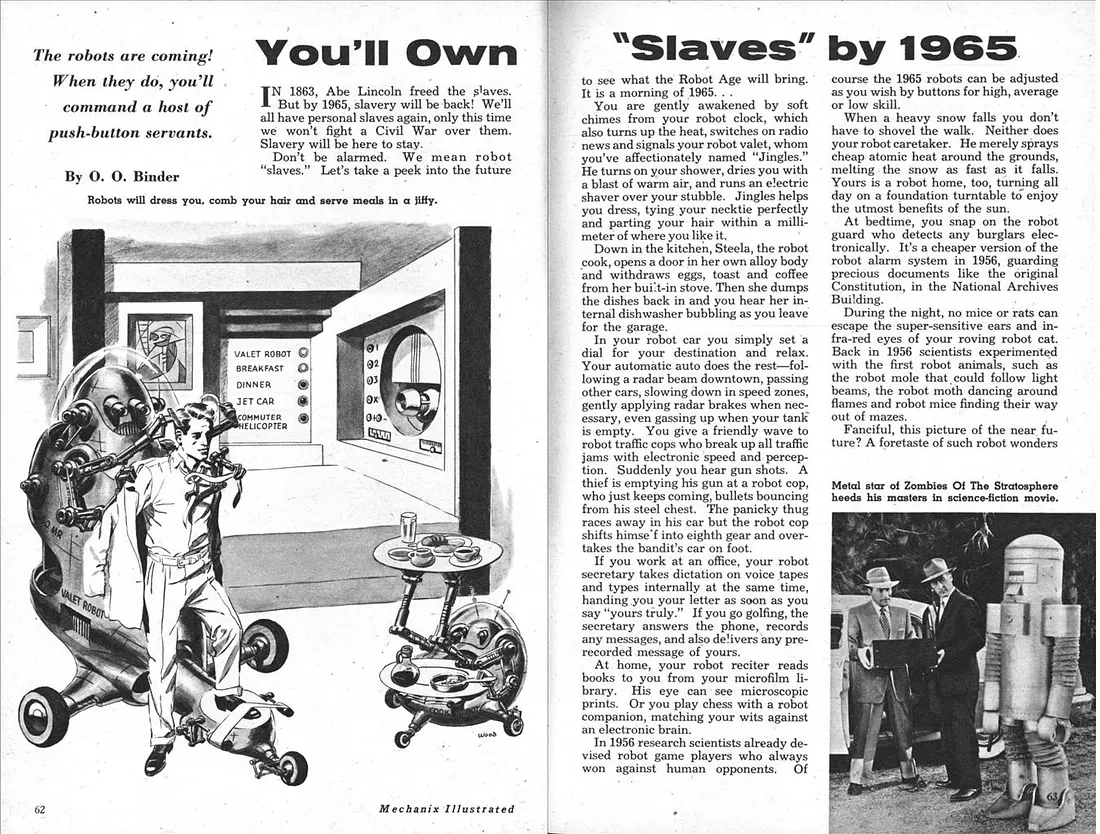
Early AI Approaches (1943-1969) - AI Perception
"Within ten years a digital computer will be the world's chess champion." (Simon & Newell, 1958)
"Machines will be capable, within twenty years, of doing any work a man can do." (Simon, 1965)
"Within a generation... the problem of creating 'artificial intelligence' will substantially be solved." (Minsky, 1967)
"In from three to eight years we will have a machine with the general intelligence of an average human being." (Minsky, 1970)

Early AI Approaches (1943-1969) - AI Perception
"Within ten years a digital computer will be the world's chess champion." (Simon & Newell, 1958)
"Machines will be capable, within twenty years, of doing any work a man can do." (Simon, 1965)
"Within a generation... the problem of creating 'artificial intelligence' will substantially be solved." (Minsky, 1967)
"In from three to eight years we will have a machine with the general intelligence of an average human being." (Minsky, 1970)
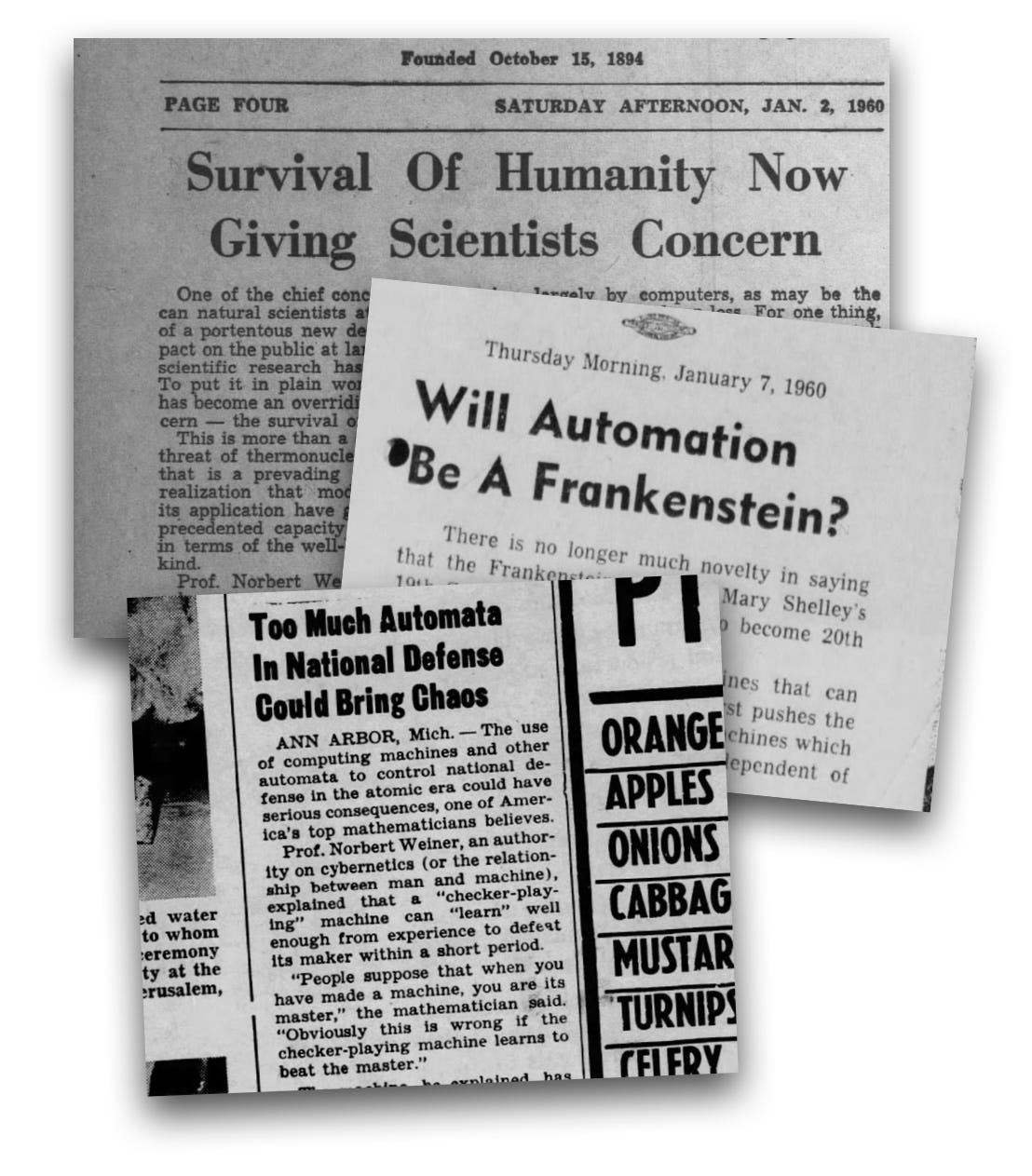
Early AI Approaches (1943-1969) - AI Perception
"Within ten years a digital computer will be the world's chess champion." (Simon & Newell, 1958)
"Machines will be capable, within twenty years, of doing any work a man can do." (Simon, 1965)
"Within a generation... the problem of creating 'artificial intelligence' will substantially be solved." (Minsky, 1967)
"In from three to eight years we will have a machine with the general intelligence of an average human being." (Minsky, 1970)
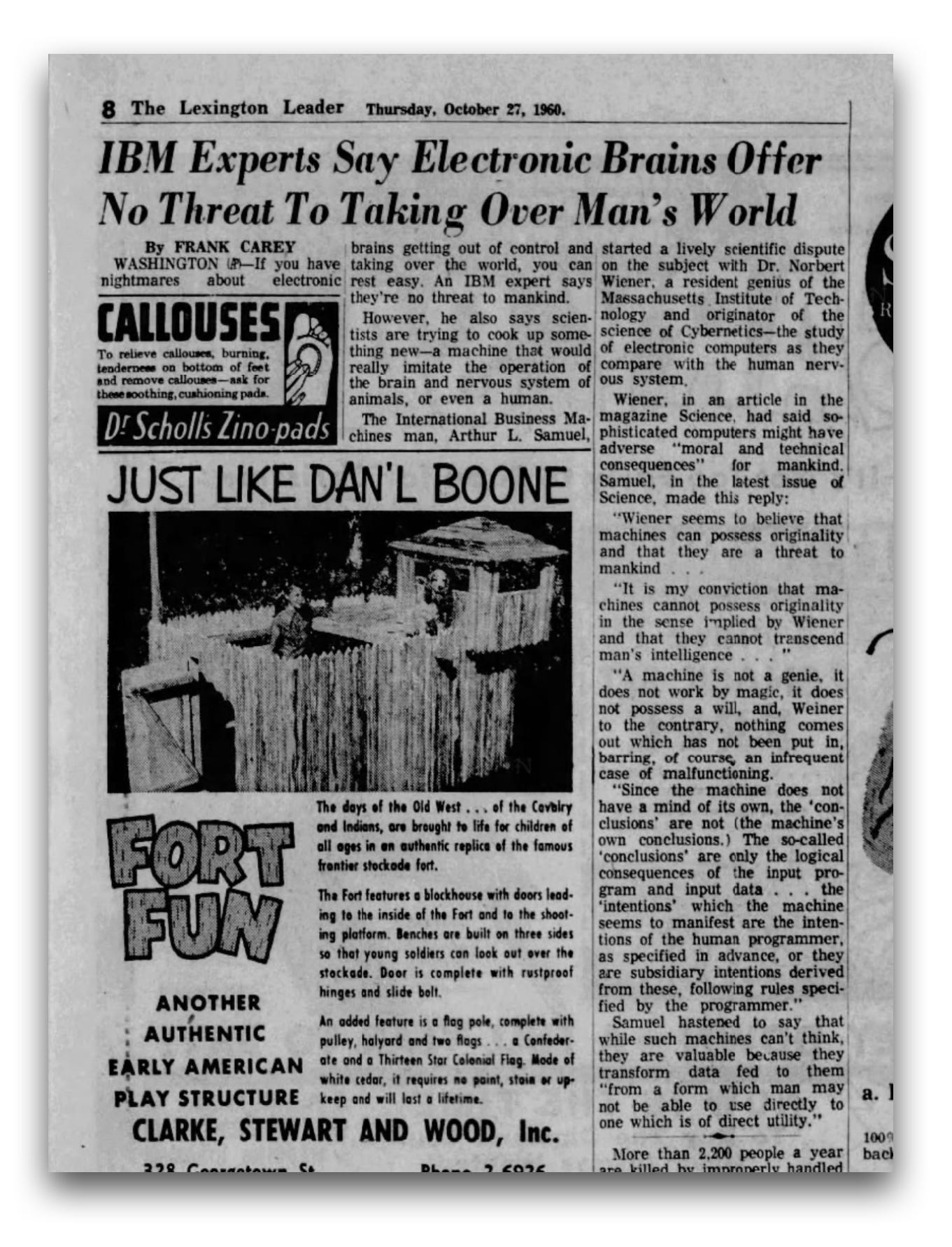
Early AI Approaches (1943-1969) - AI Limitations
Early AI Approaches (1943-1969) - AI Limitations
Computing power, algorithms, and data were insufficient to solve real-world problems.
Combinatorial explosion
Easy tasks for humans are difficult for AI (Moravec's Paradox)
Early AI Approaches (1943-1969) - AI Limitations

Computing power, algorithms, and data were insufficient to solve real-world problems.
Combinatorial explosion
Easy tasks for humans are difficult for AI (Moravec's Paradox)
Early AI Approaches (1943-1969) - AI Limitations

Computing power, algorithms, and data were insufficient to solve real-world problems.
Combinatorial explosion
Easy tasks for humans are difficult for AI (Moravec's Paradox)
Early AI Approaches (1943-1969) - AI Limitations

Computing power, algorithms, and data were insufficient to solve real-world problems.
Combinatorial explosion
Easy tasks for humans are difficult for AI (Moravec's Paradox)
AI History - First Winter (1974 - 1980)
AI History - Expert Systems (1969 - 1986)
Expert Systems (1969-1986) - Knowledge-Based Systems
Problem Definition
Formal Definition
Computational Representation
Agents are limited because of the problem's complexity. They should leverage human knowledge and emulate human reasoning.

An expert system is defined by a knowledge base, inference engine, and user interface that work together to apply domain expertise to specific problems.
Knowledge is typically modelled using subject, object, predicate semantic triple model.
Rules are if statements.
Expert Systems (1969-1986) - Relative Success
Expert Systems (1969-1986) - Relative Success
DENDRAL (1960s)
Identified unknown organic molecules using knowledge of chemistry
MYCIN (Early 1970s)
Supported bacterial infections diagnosis and treatment
XCON/R1 (1982)
eXpert CONfigurer - Automated the configuration of VAX computer systems (successful deployment)
PUFF (1982)
Interpreted pulmonary function test results to diagnose lung disorders
PROSPECTOR (1986)
An expert system for mineral exploration
DEEP BLUE (1997)
An expert system that defeated a chess world champion
Expert Systems (1969-1986) - AI Perception
Expert Systems (1969-1986) - AI Perception
"In medicine, management, and the military — indeed in most of the world's work — the daily tasks are those requiring symbolic reasoning with detailed professional knowledge." (Feigenbaum, 1982)
"Commercialising Artificial Intelligence." (The New York Times, 1982)
"Gains are Slow for Artificial Intelligence Industry." (The New York Times, 1987)
"New expert systems companies were being formed at a rate of what seemed like one a week. " (Hart, 2021)
Expert Systems (1969-1986) - AI Perception
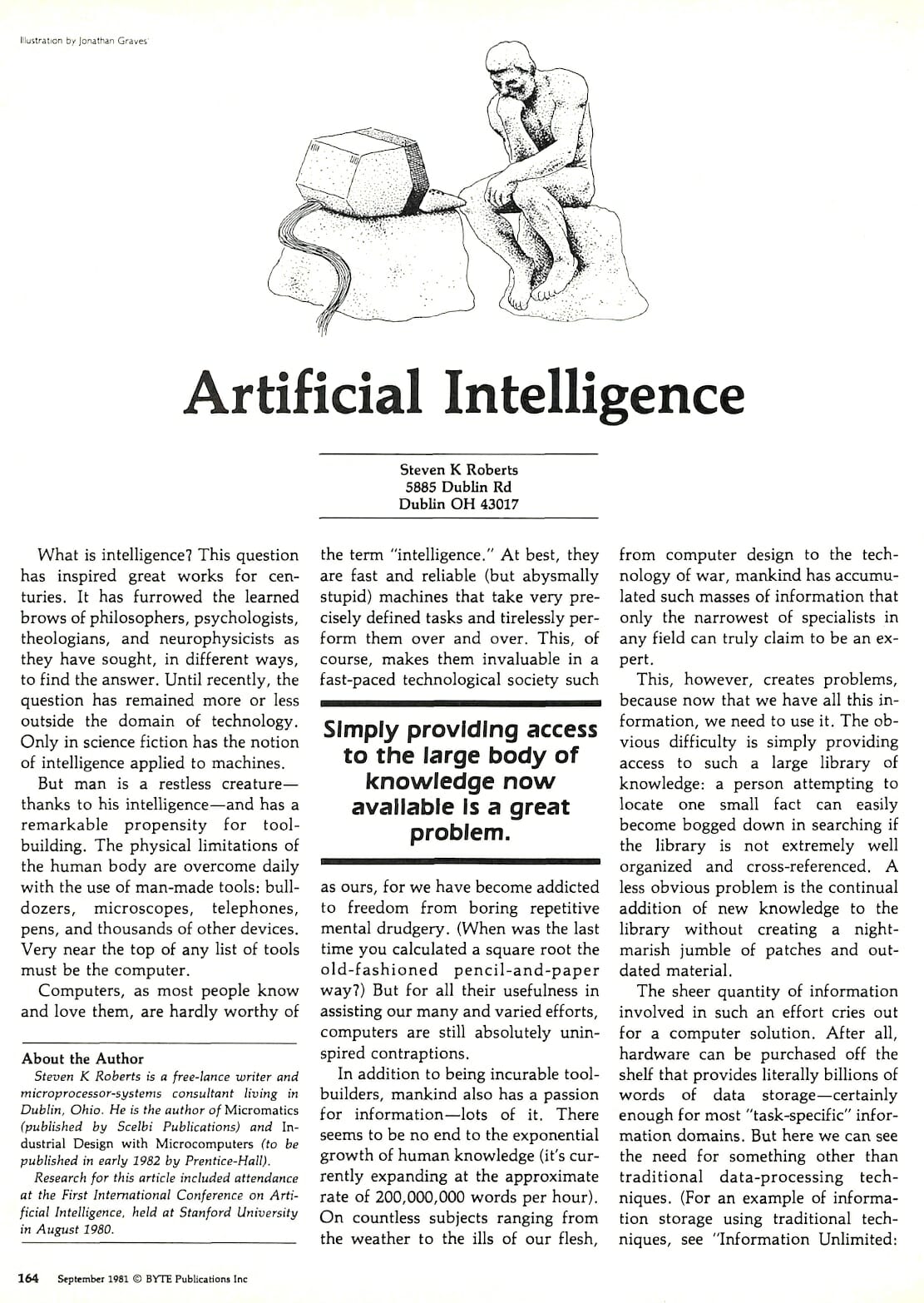
"In medicine, management, and the military — indeed in most of the world's work — the daily tasks are those requiring symbolic reasoning with detailed professional knowledge." (Feigenbaum, 1982)
"Commercialising Artificial Intelligence." (The New York Times, 1982)
"Gains are Slow for Artificial Intelligence Industry." (The New York Times, 1987)
"New expert systems companies were being formed at a rate of what seemed like one a week. " (Hart, 2021)
Expert Systems (1969-1986) - AI Perception
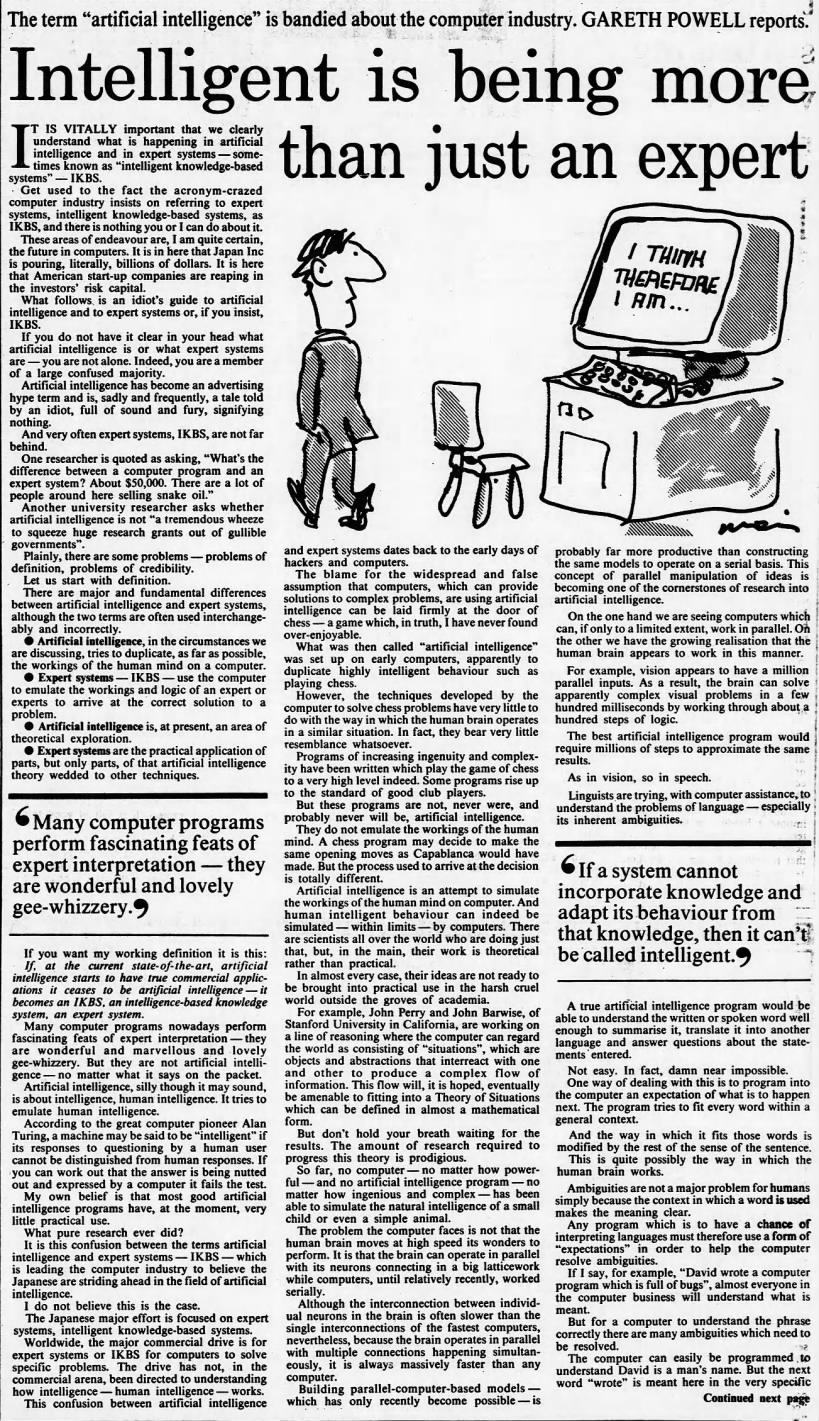
"In medicine, management, and the military — indeed in most of the world's work — the daily tasks are those requiring symbolic reasoning with detailed professional knowledge." (Feigenbaum, 1982)
"Commercialising Artificial Intelligence." (The New York Times, 1982)
"Gains are Slow for Artificial Intelligence Industry." (The New York Times, 1987)
"New expert systems companies were being formed at a rate of what seemed like one a week. " (Hart, 2021)
Expert Systems (1969-1986) - AI Perception

"In medicine, management, and the military — indeed in most of the world's work — the daily tasks are those requiring symbolic reasoning with detailed professional knowledge." (Feigenbaum, 1982)
"Commercialising Artificial Intelligence." (The New York Times, 1982)
"Gains are Slow for Artificial Intelligence Industry." (The New York Times, 1987)
"New expert systems companies were being formed at a rate of what seemed like one a week. " (Hart, 2021)
Expert Systems (1969-1986) - AI Perception

"In medicine, management, and the military — indeed in most of the world's work — the daily tasks are those requiring symbolic reasoning with detailed professional knowledge." (Feigenbaum, 1982)
"Commercialising Artificial Intelligence." (The New York Times, 1982)
"Gains are Slow for Artificial Intelligence Industry." (The New York Times, 1987)
"New expert systems companies were being formed at a rate of what seemed like one a week. " (Hart, 2021)
Expert Systems (1969-1986) - AI Limitations
Expert Systems (1969-1986) - AI Limitations

Extracting knowledge from human experts and encoding it into rules was difficult, time-consuming, and expensive
Systems could not reason beyond their pre-programmed knowledge and failed when confronted with unexpected situations
Adding more rules often led to rule interaction problems and combinatorial explosion
Updating knowledge bases as domains evolved required significant effort
AI History - Second AI Winter (1987 - 1994)
AI History - Learning from Examples (1987 - present)
Learning from Examples (1987 - present) - Data-Driven Algorithms
Problem Definition
Formal Definition
Computational Representation
Learning from Examples (1987 - present) - Data-Driven Algorithms
Problem Definition
Formal Definition
Computational Representation
Agents cannot be fully pre-programmed. Agent must learn from examples to perform a task.

Learning from Examples (1987 - present) - Data-Driven Algorithms
Problem Definition
Formal Definition
Computational Representation
Agents cannot be fully pre-programmed. Agent must learn from examples to perform a task.

Learning from examples requires a function that approximates patterns in data, using a learning algorithm, and evaluation criteria.
Learning from Examples (1987 - present) - Data-Driven Algorithms
Problem Definition
Formal Definition
Computational Representation
Agents cannot be fully pre-programmed. Agent must learn from examples to perform a task.

Learning from examples requires a function that approximates patterns in data, using a learning algorithm, and evaluation criteria.
Learning algorithms use different computational representations during the learning and inference: dataframes, tuples, trees, graphs, matrices, etc.
Learning from Examples (1987 - present) - Data-Driven Algorithms
Learning from Examples (1987 - present) - Data-Driven Algorithms

Learning from Examples (1987 - present) - Data-Driven Algorithms

Learning from Examples (1987 - present) - Data-Driven Algorithms
Learning from Examples (1987 - present) - Data-Driven Algorithms
Learning from Examples (1987 - present) - Data-Driven Algorithms
AI History - Big Data (2000s)
AI History - Big Data (2000s)
AI History - Big Data (2000s)
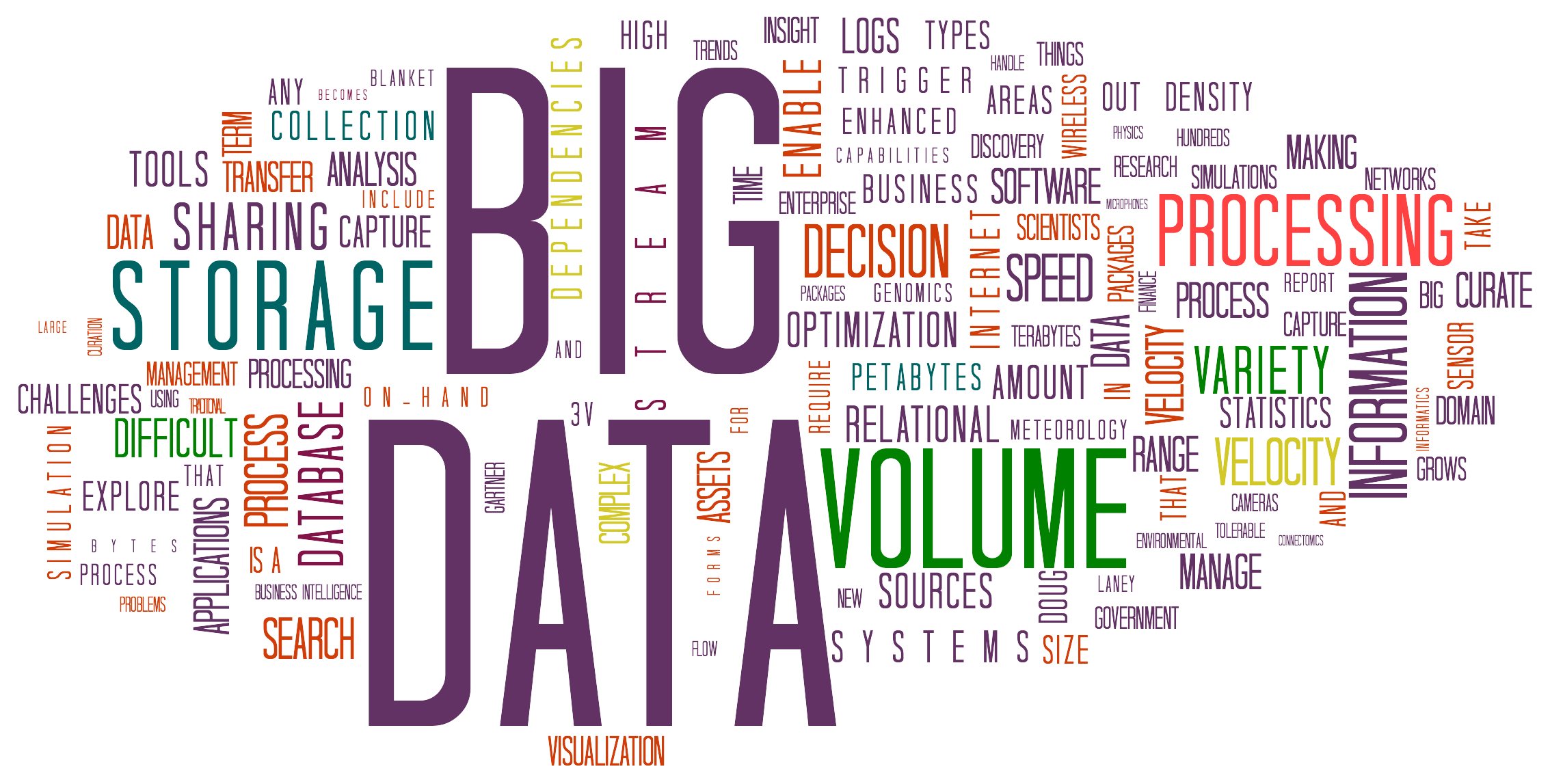
AI History - Big Data (2000s)
Large and complex datasets that improve models' statistical power
- Social Networks
- Mobile Computing
- Internet of Things
- ...

AI History - Big Data (2000s)

AI History - Machine Learning Age (2001 - present)
ML Today
AI Today - Applications
AI Today - Applications
Everyday Applications
- Voice and Chat Assistants (Siri, Chat-GPT)
- Content Recommendations (Netflix, Spotify)
- Smart Home Devices
- Facial Recognition
- Language Translation
- Fraud Detection
- Personalised Marketing
- Gaming
- ...

AI Today - Promises
AI Today - Promises
Promises
- Early diagnosis and personalised medicine
- Drug discovery
- Climate change solutions
- Personalised learning
- Accelerating science
- Productivity boost, automation
- Smart homes, cities, etc.
- ...
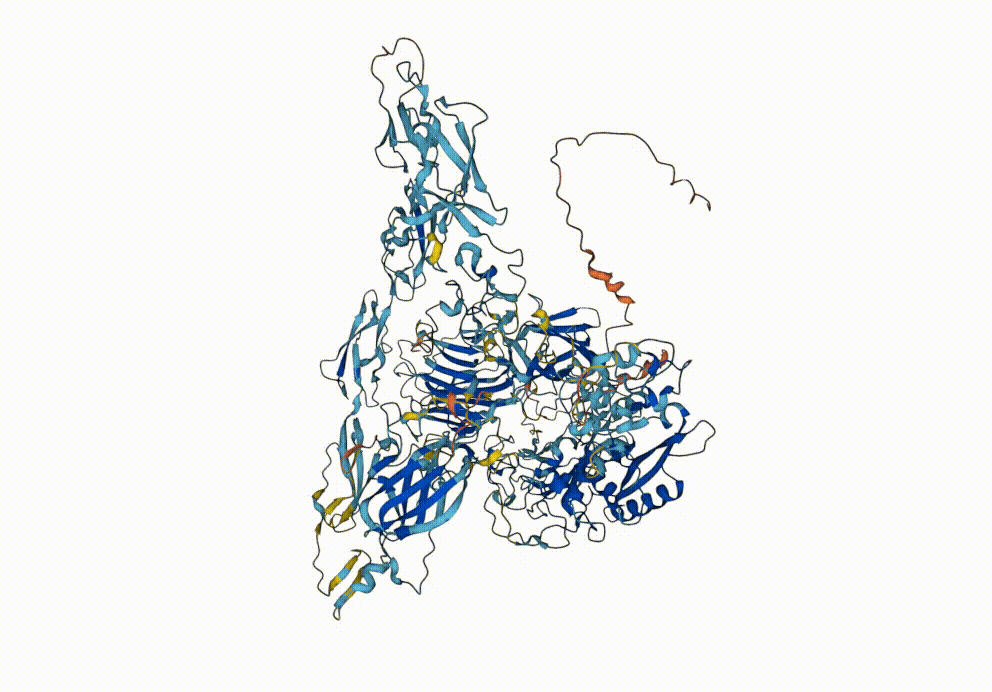
AI Today - Risks
AI Today - Risks

Risks
- Bias and discrimination, privacy violations
- Job displacement, digital divide
- Data quality issues, system vulnerabilities
- Adversarial attacks, data breaches
- Implementation costs, market disruption
- Energy consumption, carbon footprint
- Regulatory compliance, liability issues
- ...
AI Today - Risks

Risks
- Bias and discrimination, privacy violations
- Job displacement, digital divide
- Data quality issues, system vulnerabilities
- Adversarial attacks, data breaches
- Implementation costs, market disruption
- Energy consumption, carbon footprint
- Regulatory compliance, liability issues
- ...
ML Perception
ML Perception

ML Perception

ML Perception
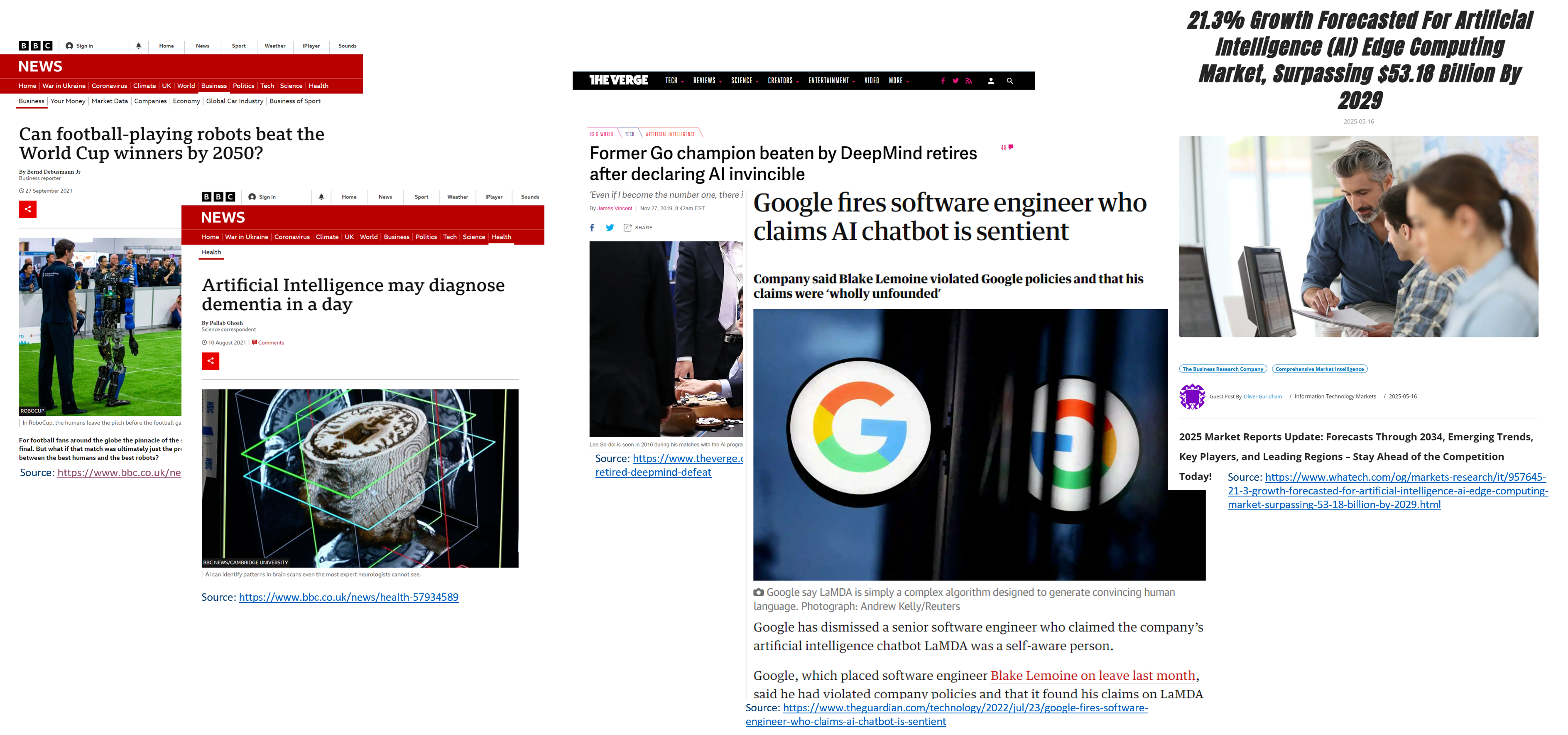
ML Perception
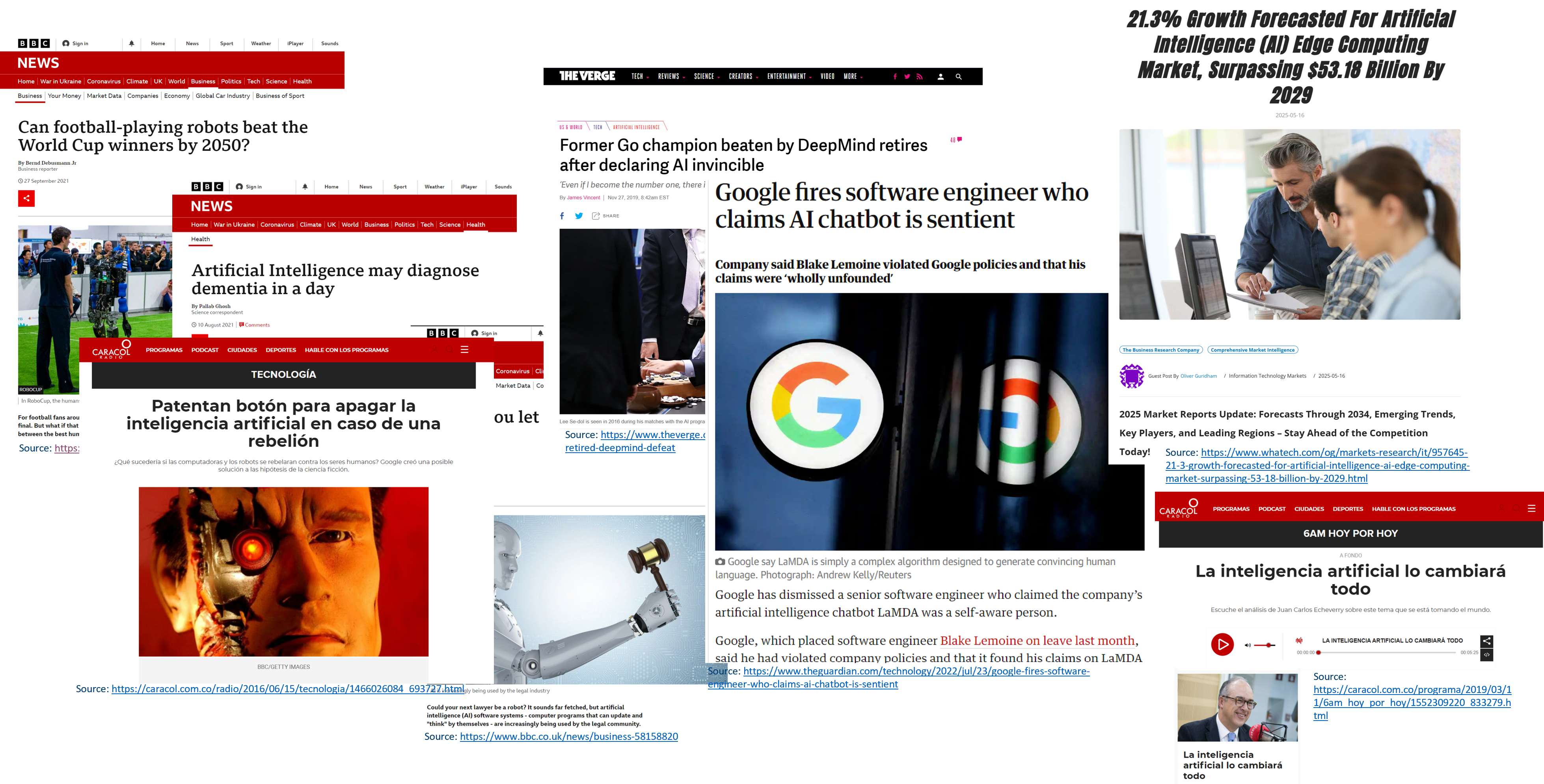
ML Perception
"We should be able to do 90 percent of miles driven [autonomously] within three years." (Musk, 2013)
"From a technology standpoint, Tesla will have a car that can do full autonomy in about three years, maybe a bit sooner." (Musk, 2015)
"I feel very confident predicting that there will be autonomous robotaxis from Tesla next year." (Musk, 2019)
...
ML Perception
"We should be able to do 90 percent of miles driven [autonomously] within three years." (Musk, 2013)
"From a technology standpoint, Tesla will have a car that can do full autonomy in about three years, maybe a bit sooner." (Musk, 2015)
"I feel very confident predicting that there will be autonomous robotaxis from Tesla next year." (Musk, 2019)
...
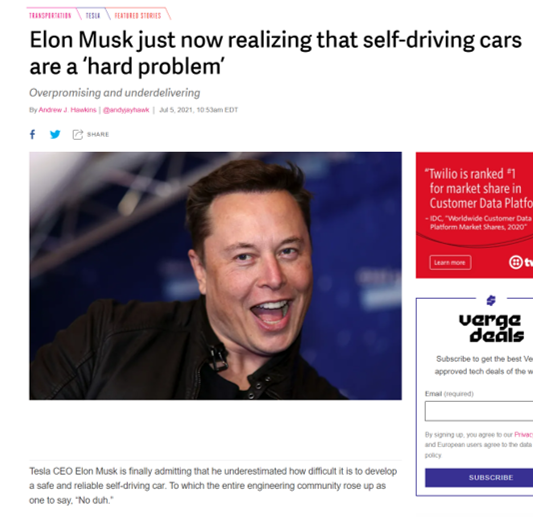
ML Perception
"We should be able to do 90 percent of miles driven [autonomously] within three years." (Musk, 2013)
"From a technology standpoint, Tesla will have a car that can do full autonomy in about three years, maybe a bit sooner." (Musk, 2015)
"I feel very confident predicting that there will be autonomous robotaxis from Tesla next year." (Musk, 2019)
...
"I predict that there will be millions of Teslas operating fully autonomously in the second half of next year." (Musk, 2025)

ML Perception

ML Perception
"We should stop training radiologists now. It’s just completely obvious that within five years, deep learning is going to do better than radiologists." (Hinton, 2016)

ML Perception
"We should stop training radiologists now. It’s just completely obvious that within five years, deep learning is going to do better than radiologists." (Hinton, 2016)

ML Perception

ML Perception

"AI will be capable of generating novel insights next year." (Altman, 2025)
"Self-improving AI will create a super intelligence." (Musk, 2025)
"When I look at the data, I see many trend lines up to 2027." (Clark, 2025)
"There is a 10-20% chance that the technology will end in human extinction." (Hinton, 2025)
"Our relationship with future AI systems is that we are going to be their boss." (LeCun, 2025)
ML Perception
"Machines will be capable, within twenty years, of doing any work a man can do." (Simon, 1965)
"In from three to eight years we will have a machine with the general intelligence of an average human being." (Minsky, 1970)
"In medicine, management, and the military — indeed in most of the world's work — the daily tasks are those requiring symbolic reasoning with detailed professional knowledge." (Feigenbaum, 1982)
"AI will be capable of generating novel insights next year." (Altman, 2025)
"Self-improving AI will create a super intelligence." (Musk, 2025)
"When I look at the data, I see many trend lines up to 2027." (Clark, 2025)
"There is a 10-20% chance that the technology will end in human extinction." (Hinton, 2025)
"Our relationship with future AI systems is that we are going to be their boss." (LeCun, 2025)
ML Perception

"AI will be capable of generating novel insights next year." (Altman, 2025)
"Self-improving AI will create a super intelligence." (Musk, 2025)
"When I look at the data, I see many trend lines up to 2027." (Clark, 2025)
"There is a 10-20% chance that the technology will end in human extinction." (Hinton, 2025)
"Our relationship with future AI systems is that we are going to be their boss." (LeCun, 2025)
ML Perception


ML Perception


ML Perception

"... step 1: solving intelligence, step 2: use it to solve everything else..." (Hassabis, 2025)
"Artificial General Intelligence (AGI) will emerge in the next five or 10 years." (Hassabis, 2025)
ML Perception

Machine Learning Problem Requirements
1. Massive combinatorial search space
2. Clear objective function (metric) to optimise against
3. Lots of data and/or accurate and efficient simulators
ML Perception

Machine Learning Problem Requirements
1. Massive combinatorial search space
2. Clear objective function (metric) to optimise against
3. Lots of data and/or accurate and efficient simulators
ML Perception

Machine Learning Problem Requirements
1. Massive combinatorial search space
2. Clear objective function (metric) to optimise against
3. Lots of data and/or accurate and efficient simulators
ML Perception
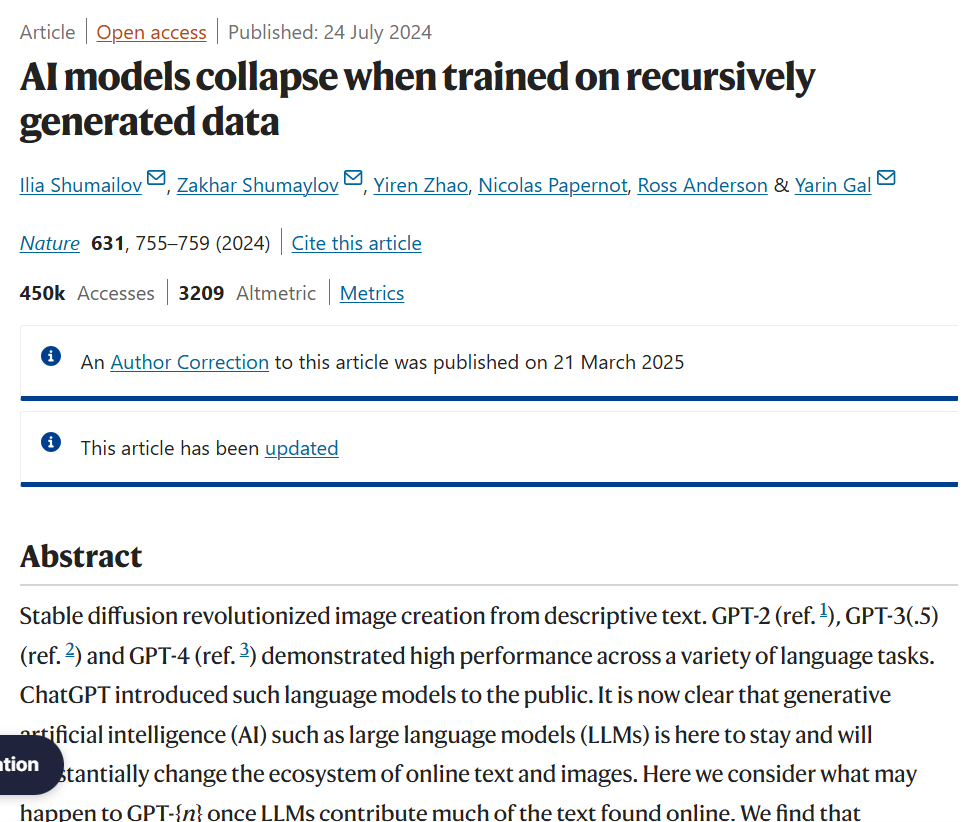
Machine Learning Problem Requirements
1. Massive combinatorial search space
2. Clear objective function (metric) to optimise against
3. Lots of data and/or accurate and efficient simulators
Scientific Approach

Scientific Approach

"It seems to me what is called for is an exquisite balance between two conflicting needs: the most skeptical scrutiny of all hypotheses that are served up to us and at the same time a great openness to new ideas. Obviously those two modes of thought are in some tension. But if you are able to exercise only one of these modes, whichever one it is, you’re in deep trouble. (The Burden of Skepticism, Sagan, 1987)
ML Definition
ML Definition
ML Definition
ML Definition
Our definition before...
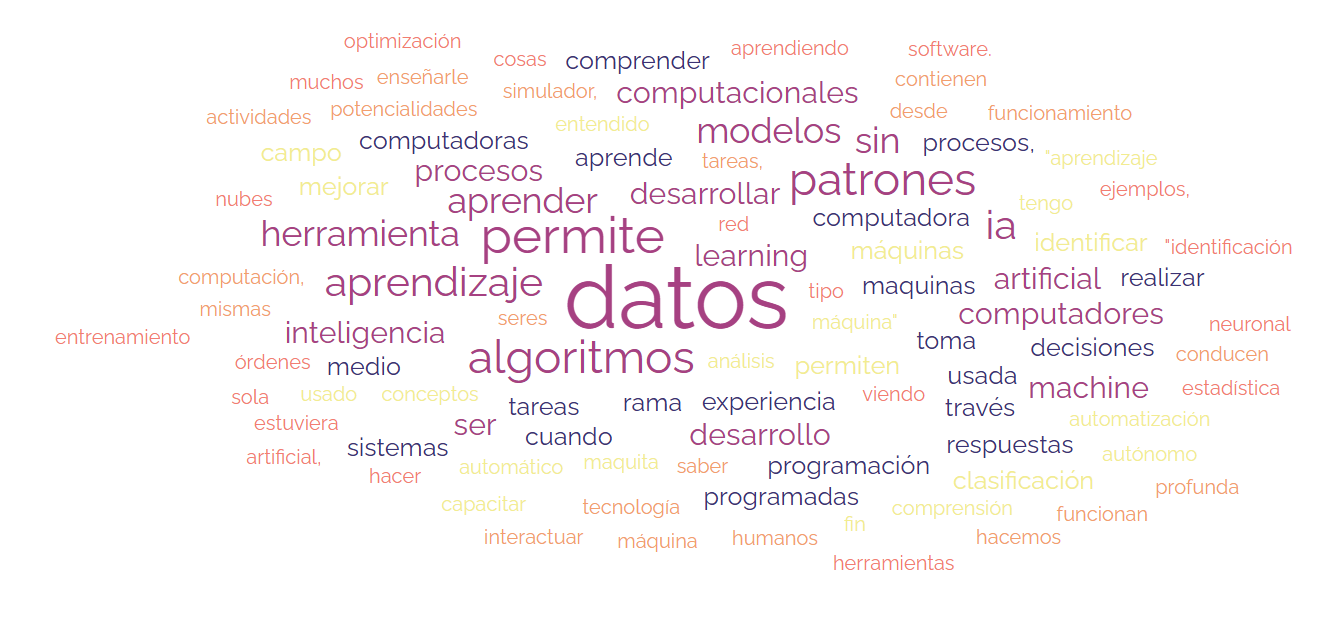
ML Definition
ML Definition
Our ML projects must have a purpose...

The "Technocentric" View
The "Technocentric" View
The "Technocentric" View

The "Technocentric" View


The "Technocentric" View

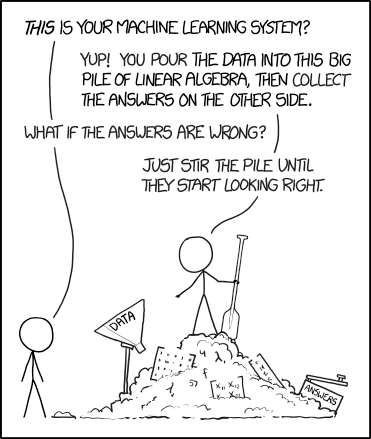
The "Technocentric" View

| Learning Model | Accuracy |
|---|---|
| Model v1 | 88% |
| Model v2 | 90% |
| Model v3 | 98% |
The "Technocentric" View

| Learning Model | Accuracy |
|---|---|
| Model v1 | 88% |
| Model v2 | 90% |
| Model v3 | 98% |
The "Technocentric" View

| Learning Model | Accuracy |
|---|---|
| Model v1 | 88% |
| Model v2 | 90% |
| Model v3 | 98% |
Does Model v3 satisfy users' requirements?
The "Technocentric" View

| Learning Model | Accuracy |
|---|---|
| Model v1 | 88% |
| Model v2 | 90% |
| Model v3 | 98% |
Does Model v3 satisfy users' requirements?
For example:
- Users require accurate and fast responses
- The project budget is limited
- The system must be user-friendly
- Users with disabilities must be prioritised
- ...
The "Technocentric" View

Threat to AI applications and promises
- Mundane applications for problems we did not know we had
- Disregard for social and environmental implications
- Unrealistic expectations and hype
- Exclusion of diverse perspectives and voices
- Unsustainable technologies
- Increased inequality and digital divide
- Security and privacy concerns
- ...
The "Technocentric" View

"Grok referenced the debunked conspiracy theory of “white genocide” in South Africa in reply to unrelated prompts, such as questions about baseball or humorous requests to talk like a pirate. " (May, 2025)
"ChatGPT suggested a dangerous route to tourists hiking in the mountains in Poland and resulted in the hikers having to be rescued." (January, 2025)
"Steve Talley, a financial adviser in Denver, Colorado, was wrongfully arrested twice for bank robberies he did not commit, based on flawed facial recognition technology and questionable identification procedures." (September, 2014)
Learn more at the AIAAIC Repository
Context Matters
Context Matters
Context Matters
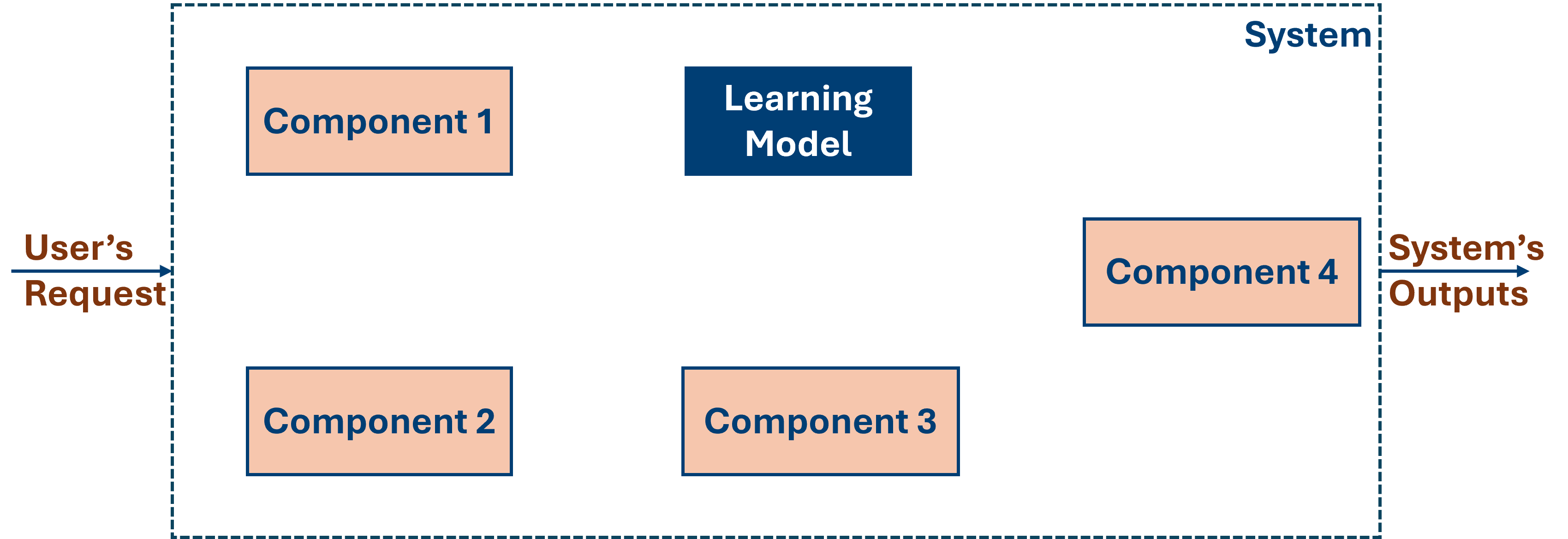
Context Matters
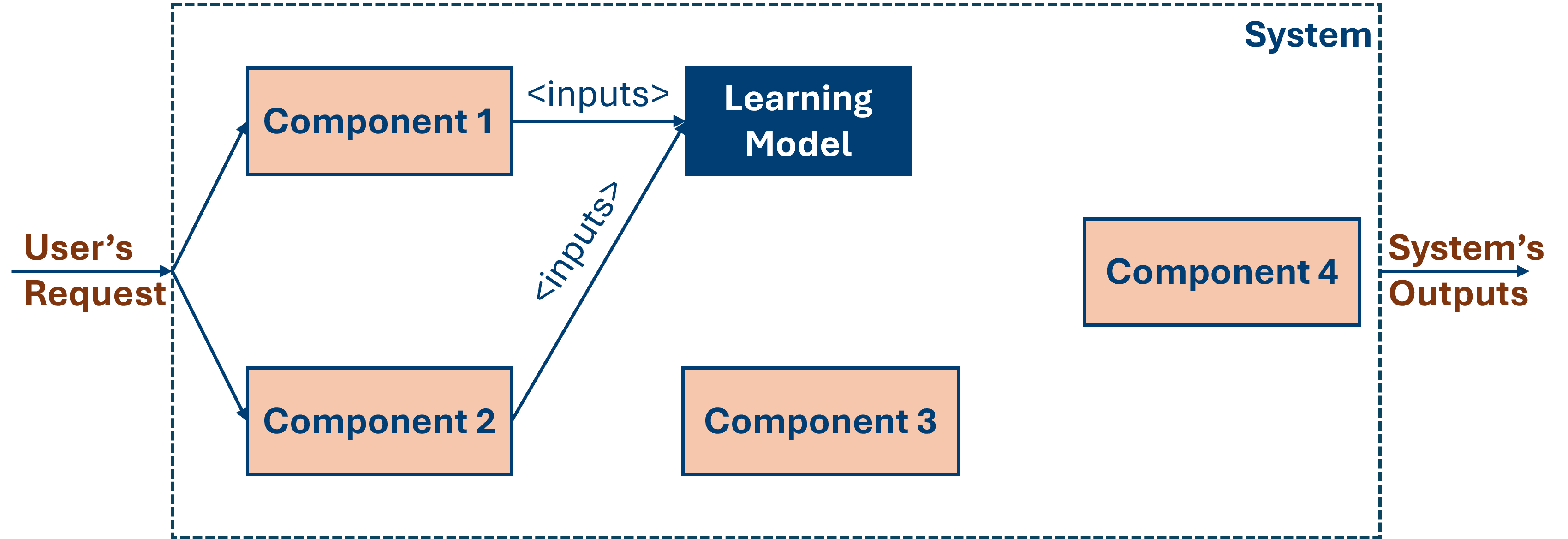
Context Matters
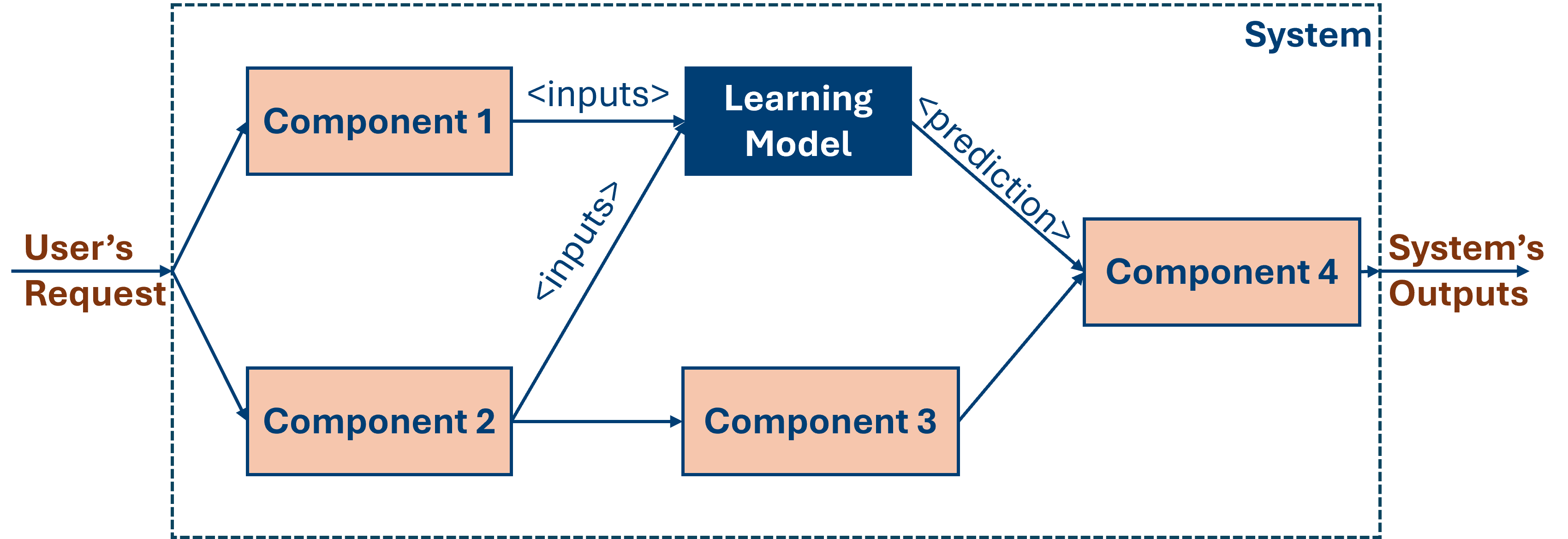
Context Matters

Context Matters

| Learning Model | Accuracy |
|---|---|
| Model v1 | 88% |
| Model v2 | 90% |
| Model v3 | 98% |
Context Matters

Latency Requirement
(< 5 secs)
| Learning Model | Accuracy |
|---|---|
| Model v1 | 88% |
| Model v2 | 90% |
| Model v3 | 98% |
Context Matters

Latency Requirement
(< 5 secs)
| Learning Model | Accuracy | Latency |
|---|---|---|
| Model v1 | 88% | 3 secs |
| Model v2 | 90% | 4 secs |
| Model v3 | 98% | 10 secs |
Context Matters

Resource Limitations
(Low budget)
| Learning Model | Accuracy | Latency |
|---|---|---|
| Model v1 | 88% | 3 secs |
| Model v2 | 90% | 4 secs |
| Model v3 | 98% | 10 secs |
Context Matters

Resource Limitations
(Low budget)
| Learning Model | Accuracy | Latency | Resource Demand |
|---|---|---|---|
| Model v1 | 88% | 3 secs | Low |
| Model v2 | 90% | 4 secs | Medium |
| Model v3 | 98% | 10 secs | High |
Context Matters

Resource Limitations
(Low budget)
| Learning Model | Accuracy | Latency | Resource Demand |
|---|---|---|---|
| Model v1 | 88% | 3 secs | Low |
| Model v2 | 90% | 4 secs | Medium |
| Model v3 | 98% | 10 secs | High |
Context Matters

Example 1
Data Science Africa (DSA)
Data Science Africa (DSA)
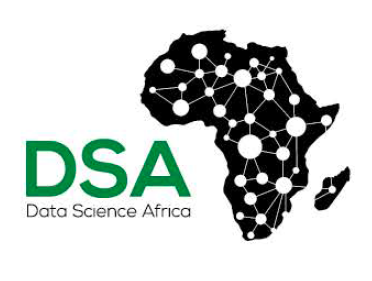
Learn more at https://www.datascienceafrica.org/
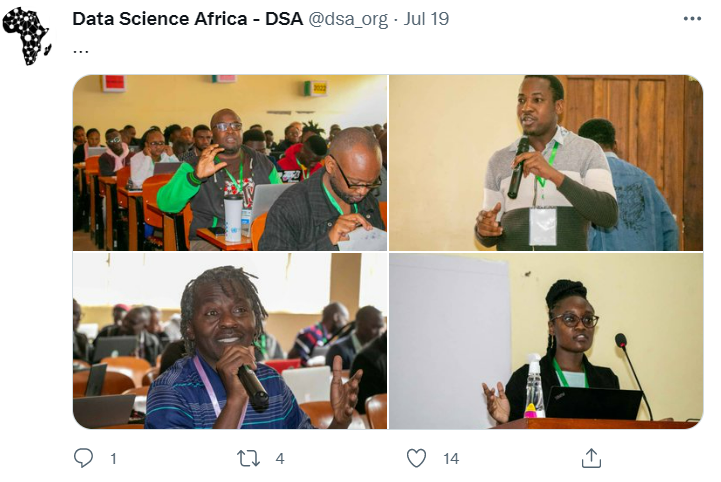
Data Science Africa (DSA)

Learn more at https://www.datascienceafrica.org/
The Ecosystem:
- Community of universities around the continent
- Inclusive training programmes
- Technical knowledge
- Students with initiative
Data Science Africa (DSA)

Learn more at https://www.datascienceafrica.org/
Social Problems:
- Food security and hunger
- Poverty and inequality
- Healthcare issues (e.g., epidemics)
- Access to clean water and sanitation
- Gender inequality and violence
- Access to quality education
- Climate change and environmental problems
- ...
Data Science Africa (DSA)

Data Science Africa (DSA)


Data Science Africa (DSA)
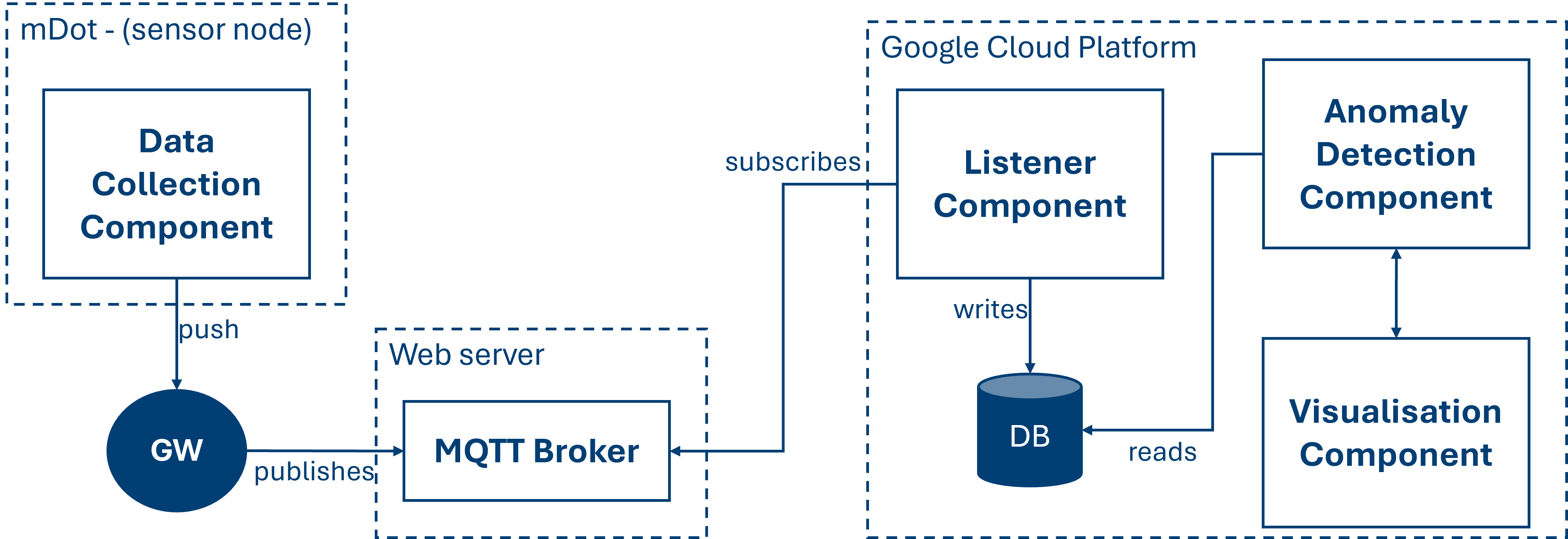
Data Science Africa (DSA)

Example 2
Service Placement Problem
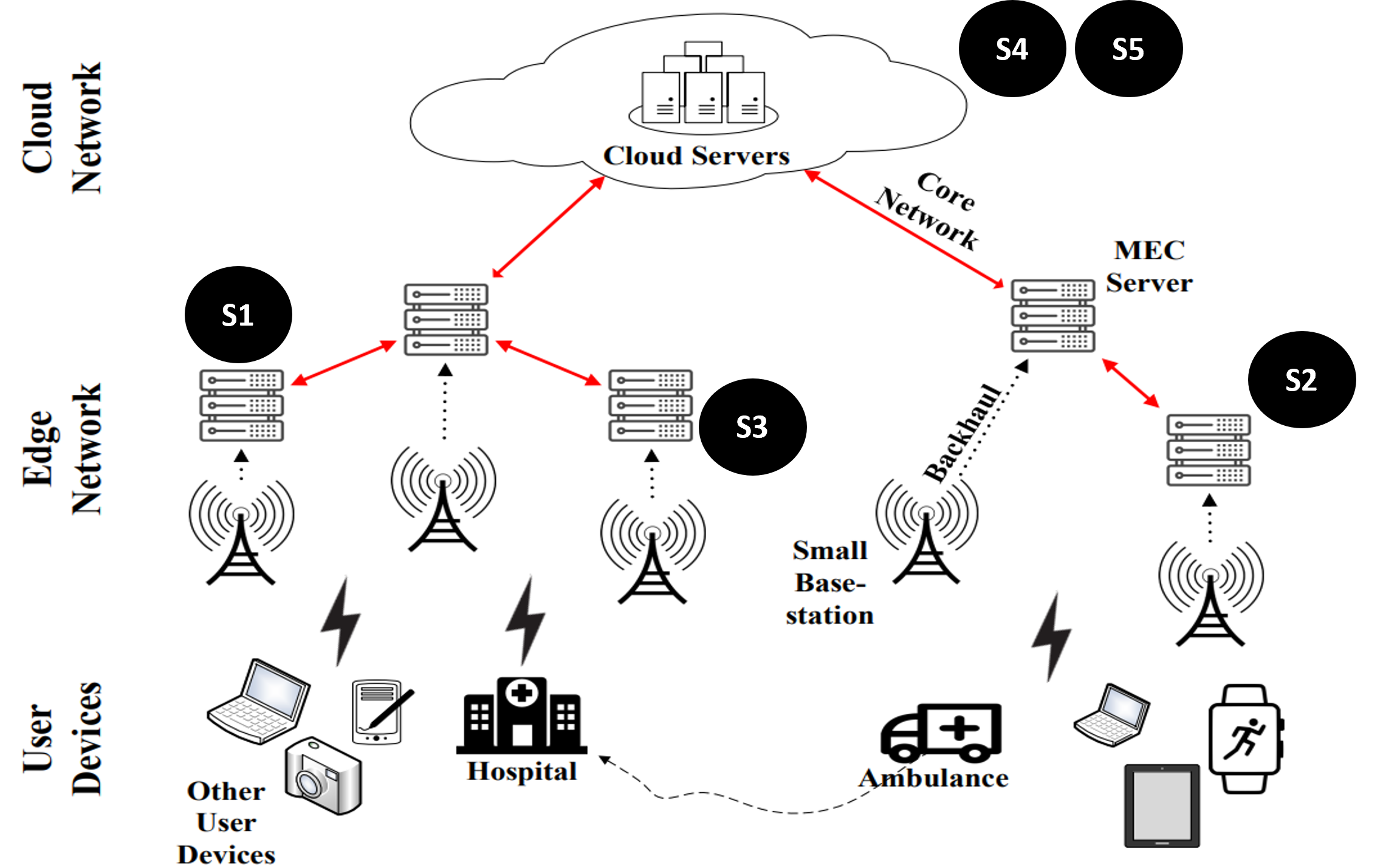
Dynamic Service Placement in Edge Computing
Service Placement Problem

Dynamic Service Placement in Edge Computing
- Edge servers are located close to end users, allowing for local data processing.
- Services run on edge servers, which have limited resources.
- The challenge is to determine the optimal allocation of services and edge servers to minimize latency while considering resource constraints.
- This challenge is referred to as the Service Placement Problem.
Service Placement Problem

Dynamic Service Placement in Edge Computing
Objective Functions:
Subject to:
Service Placement Problem
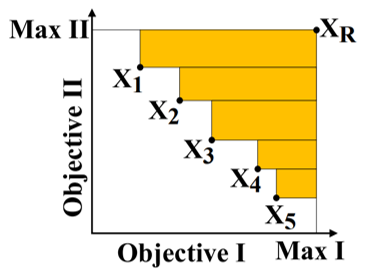
Dynamic Service Placement in Edge Computing
Objective Functions:
Subject to:
Service Placement Problem
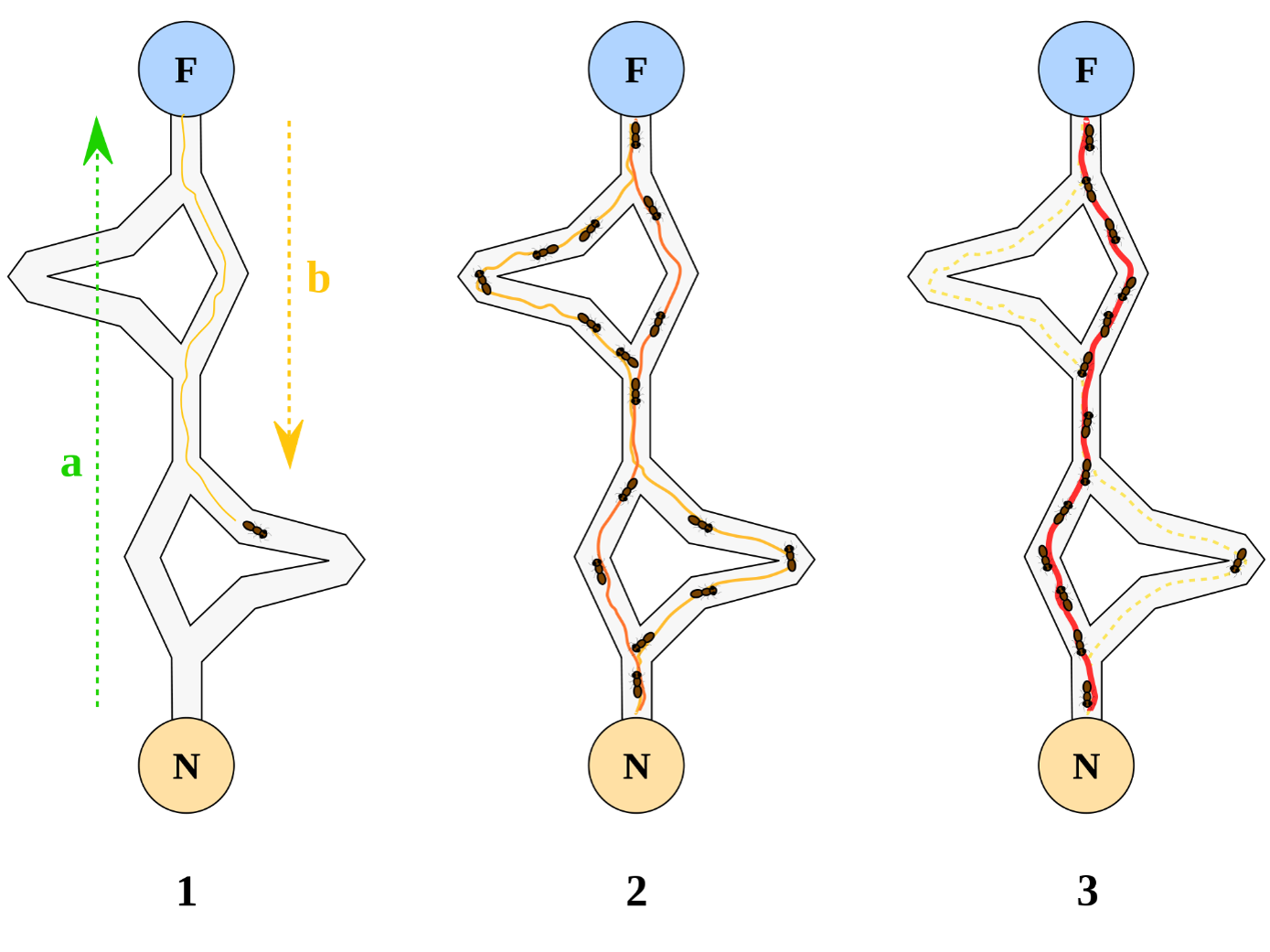
Dynamic Service Placement in Edge Computing
Objective Functions:
Subject to:
Service Placement Problem

Ant Colony Optimization Algorithm
Where:
Service Placement Problem

Service Placement Problem
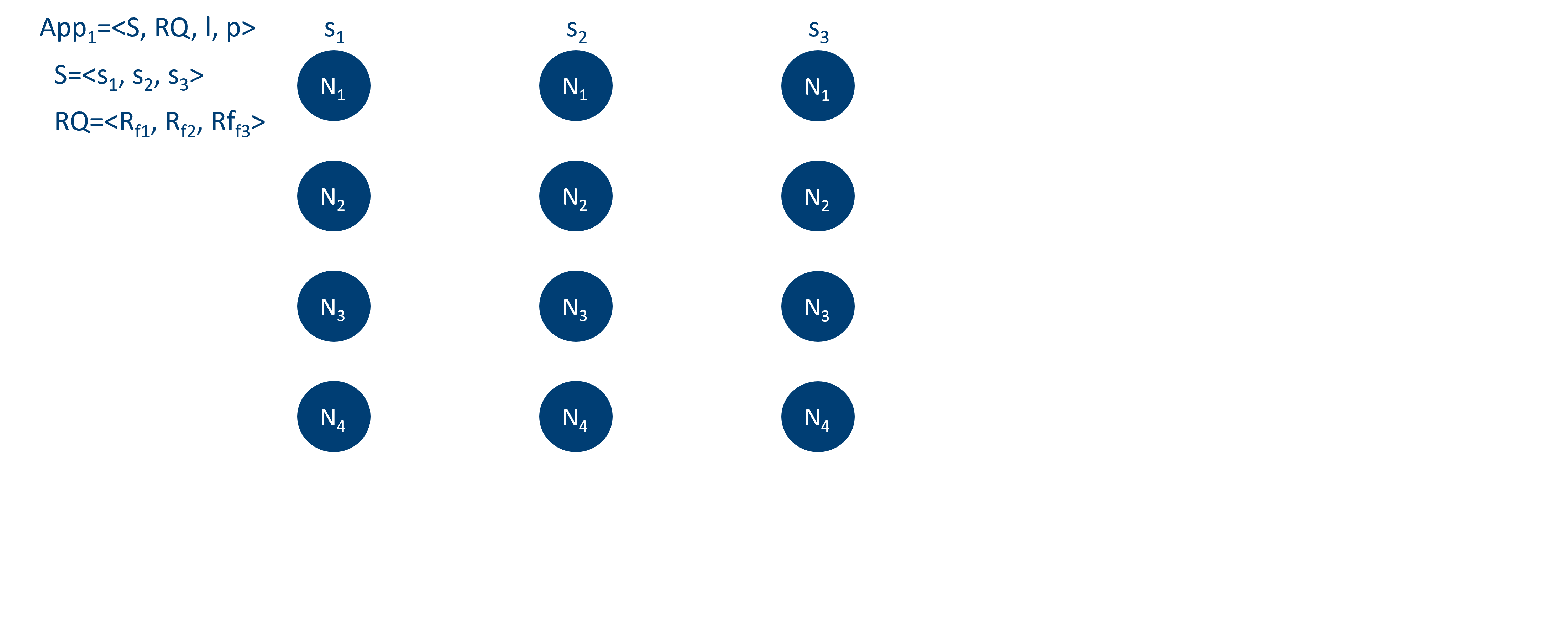
Service Placement Problem

Service Placement Problem
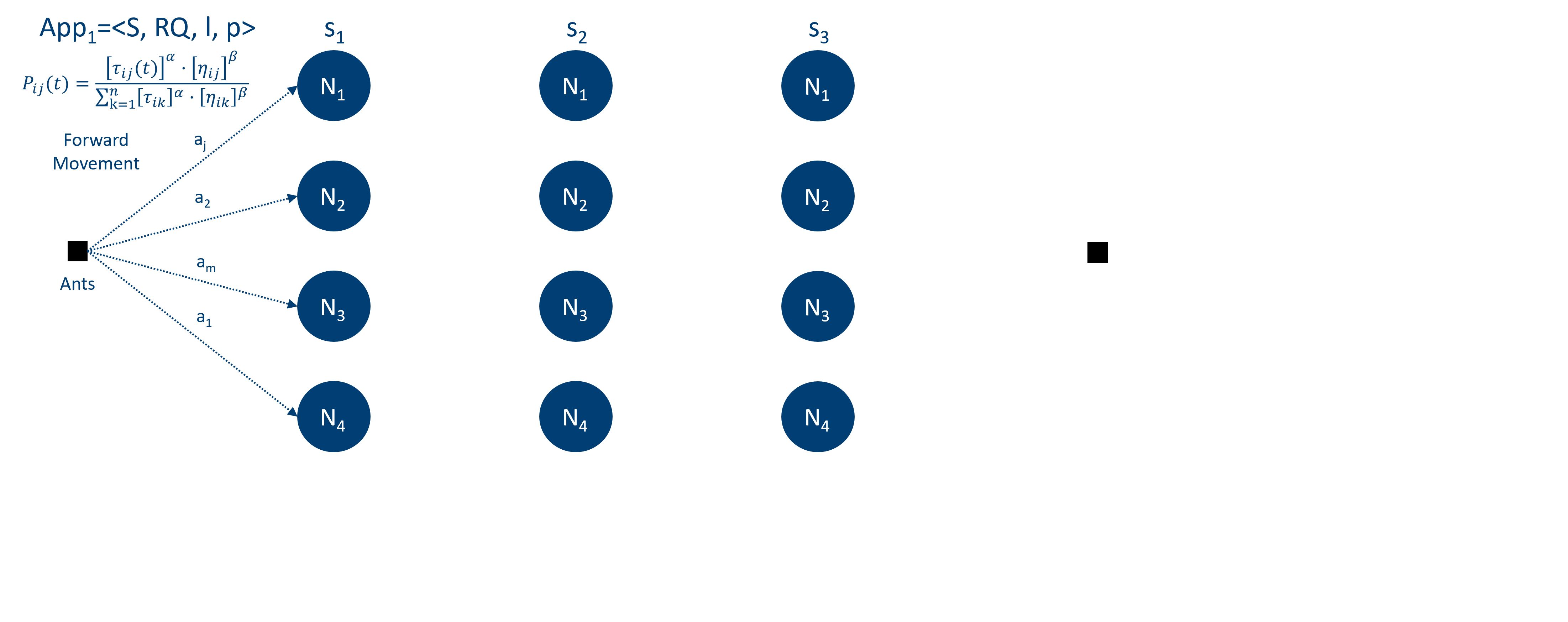
Service Placement Problem

Service Placement Problem
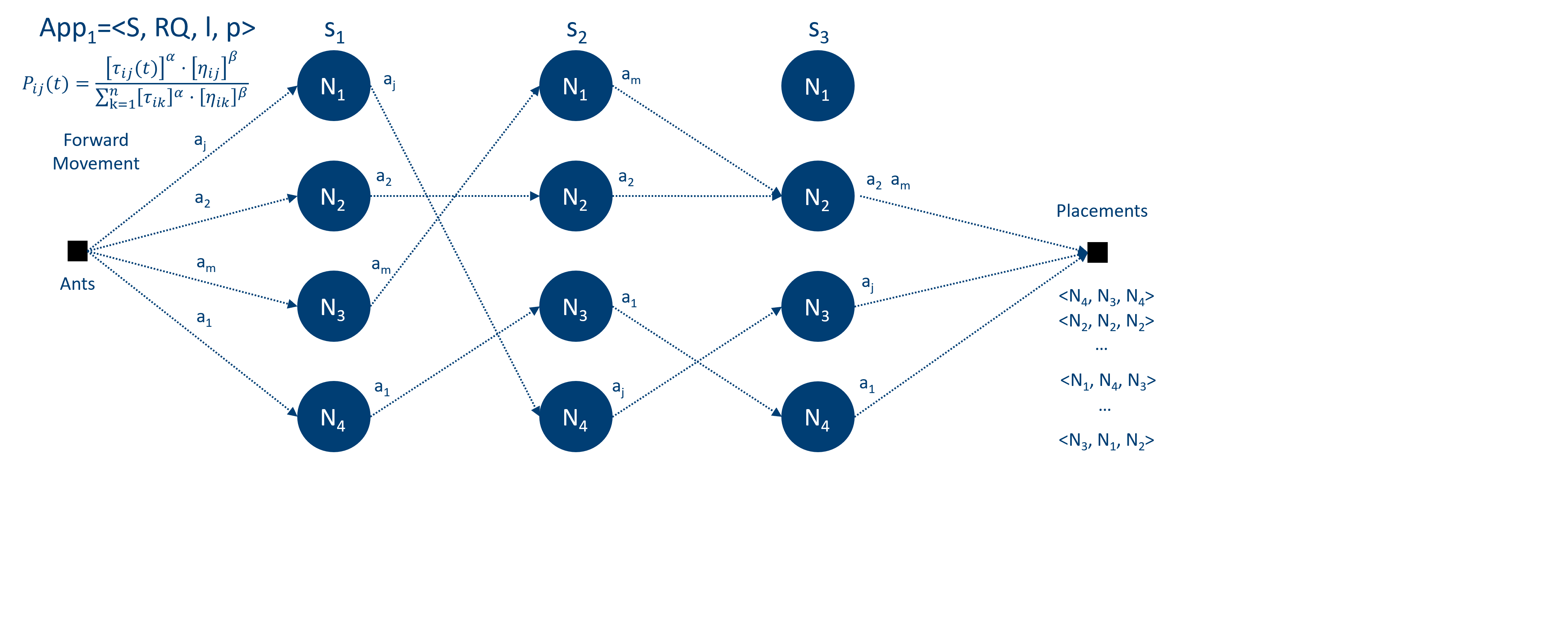
Service Placement Problem
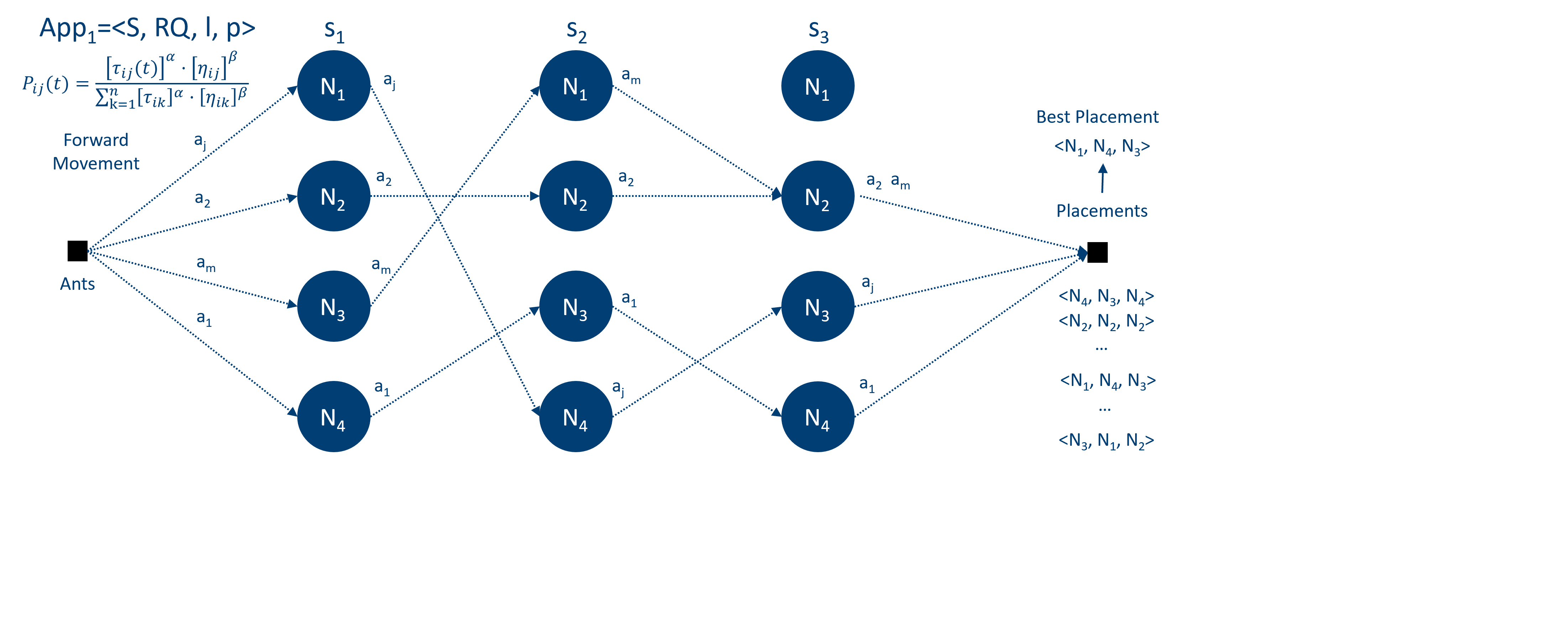
Service Placement Problem
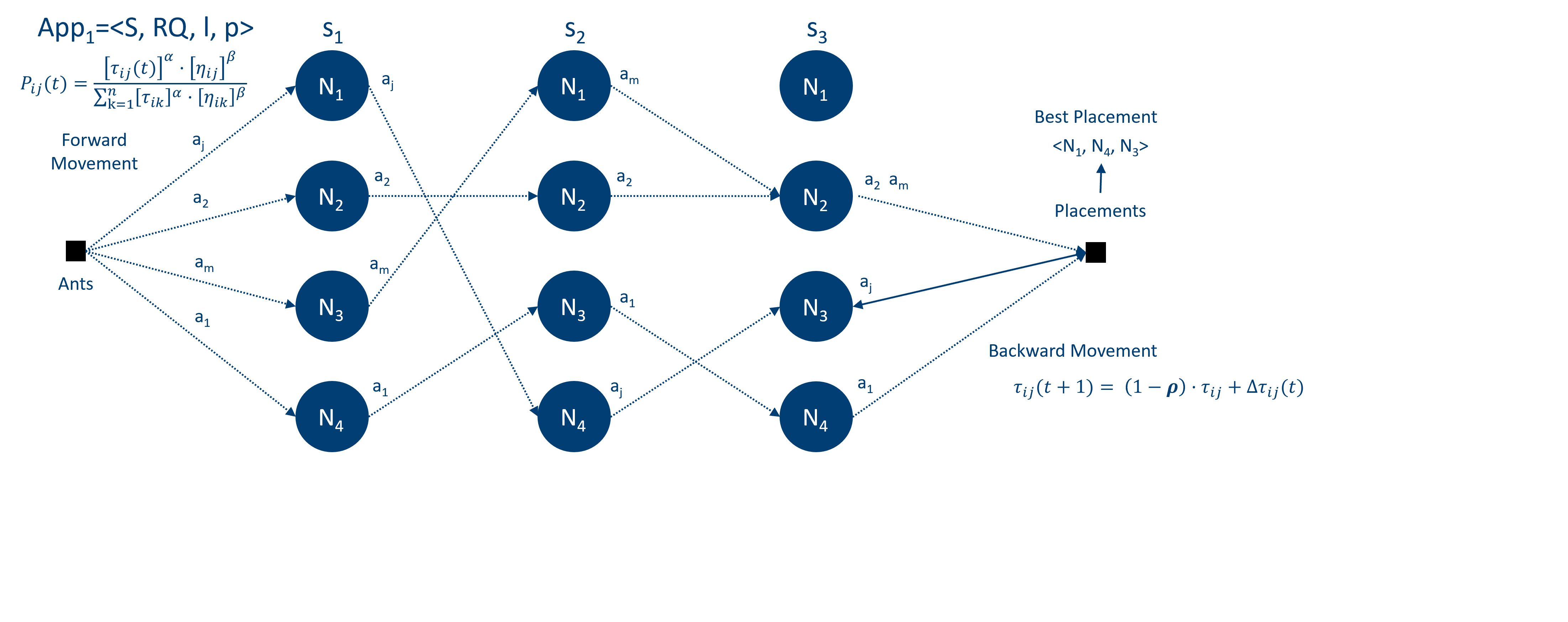
Service Placement Problem
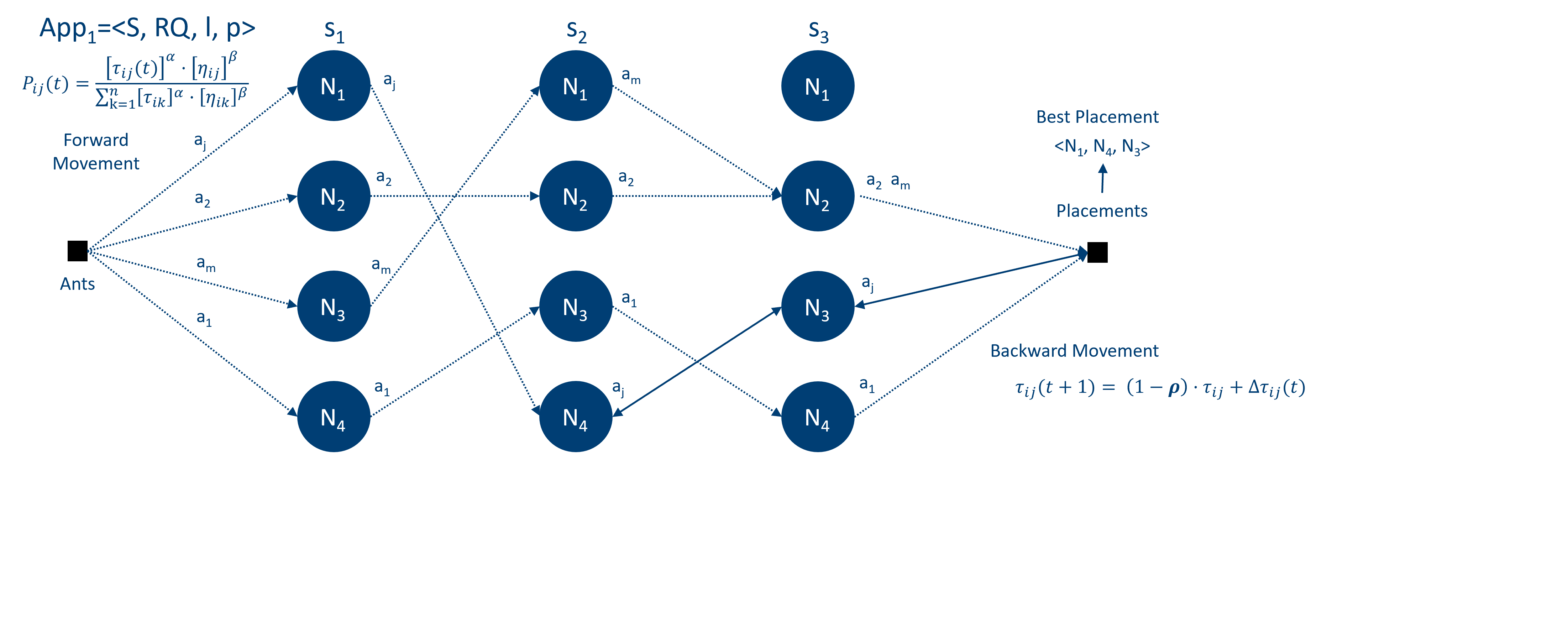
Service Placement Problem
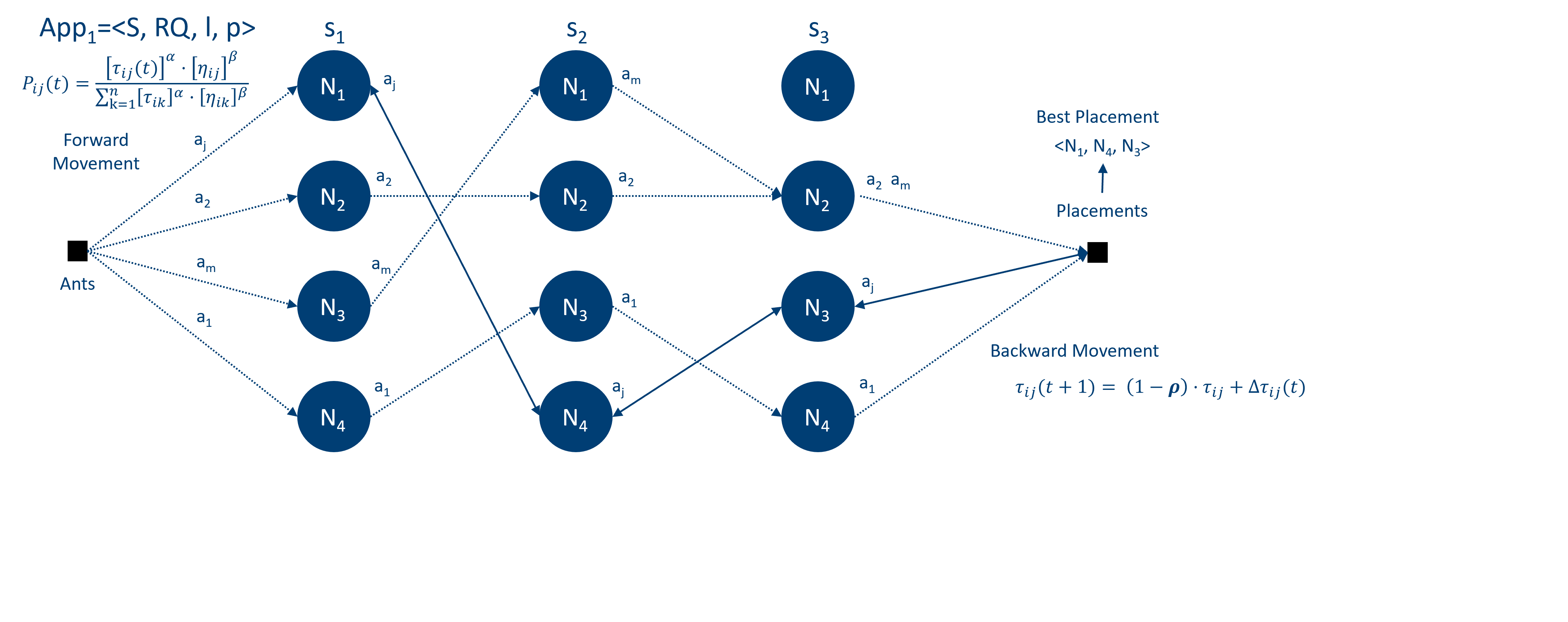
Service Placement Problem
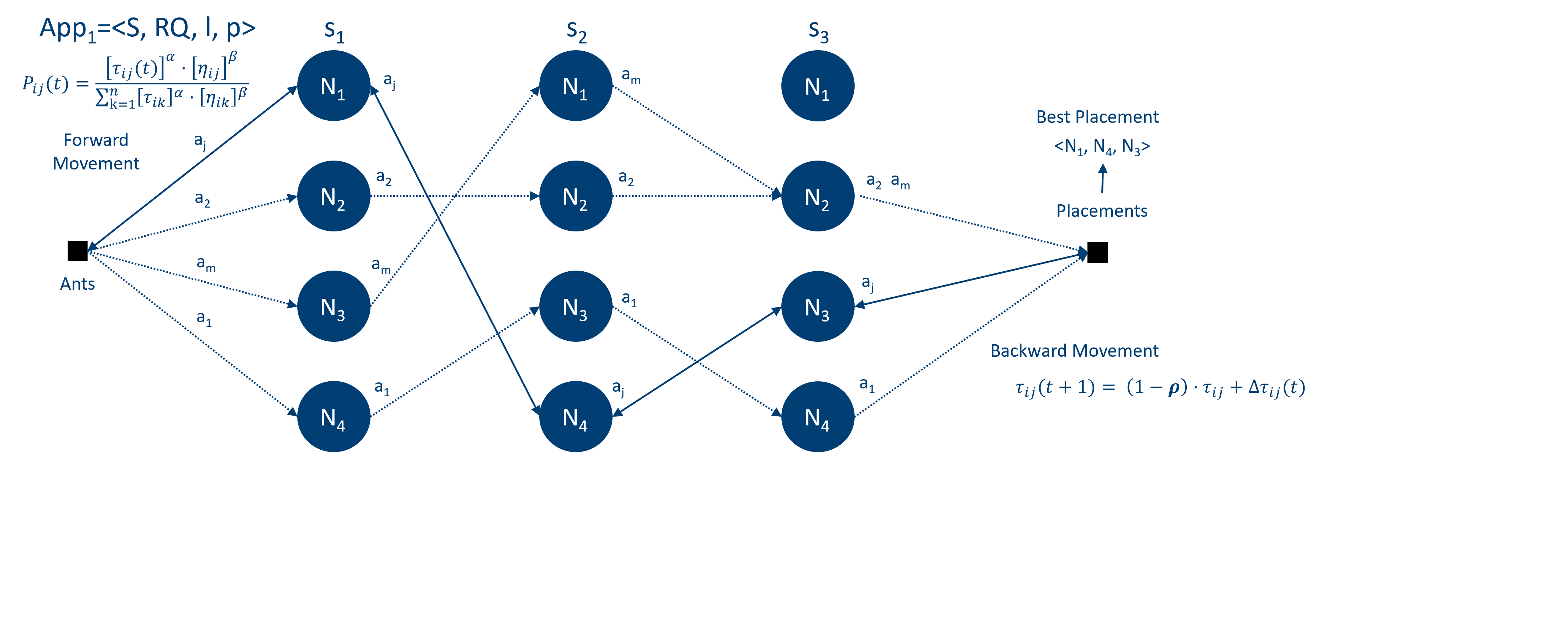
Service Placement Problem

Service Placement Problem
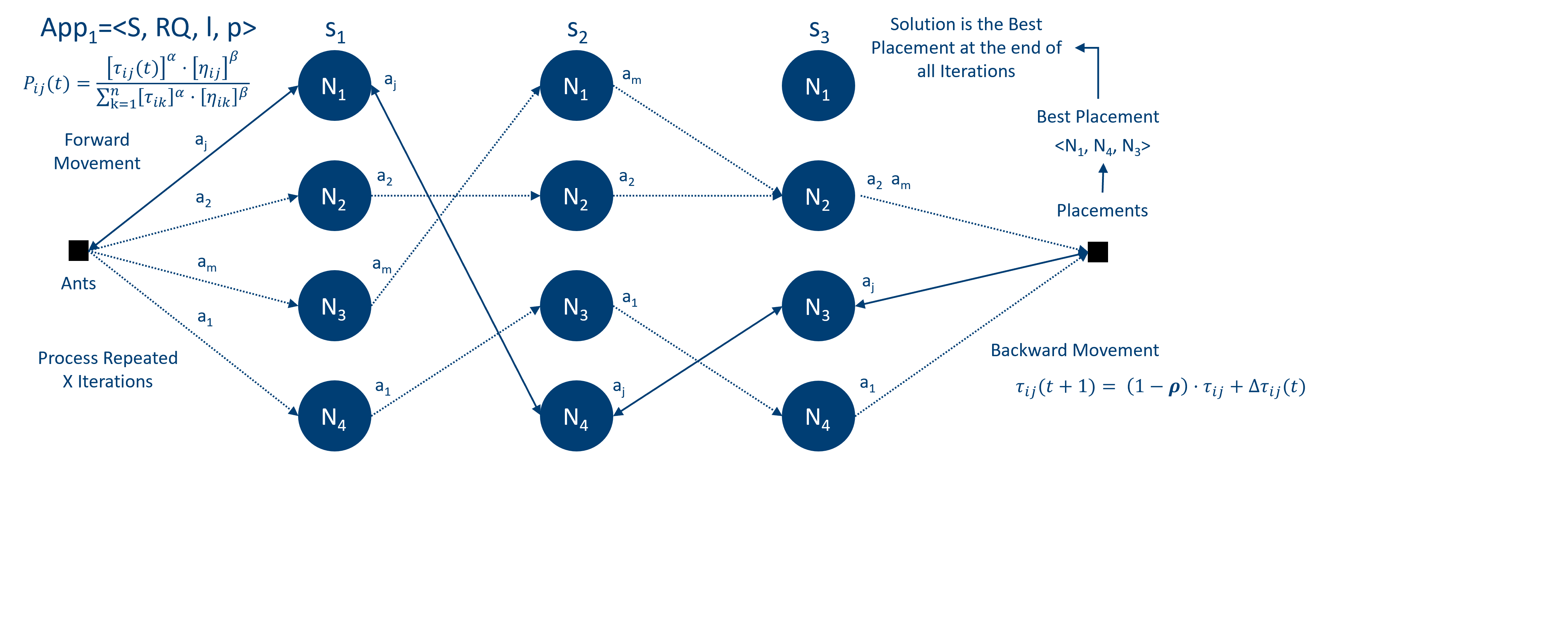
Service Placement Problem

Service Placement Problem

Service Placement Problem

This execution time does not suit low-latency requirements, but that is how ACO is designed.
Service Placement Problem

This execution time does not suit low-latency requirements, but that is how ACO is designed.
Service Placement Problem
We should analyse the problem first:
Service Placement Problem
We should analyse the problem first:
Variables we cannot reduce
- Number of services
- Number of iterations
- Number of ants
Service Placement Problem
We should analyse the problem first:
Variables we cannot reduce
- Number of services
- Number of iterations
- Number of ants
We can reduce the number of servers, how?
We can pre-select edge servers by predicting user locations.
Service Placement Problem
We should analyse the problem first:
Variables we cannot reduce
- Number of services
- Number of iterations
- Number of ants
We can reduce the number of servers, how?
We can pre-select edge servers by predicting user locations.
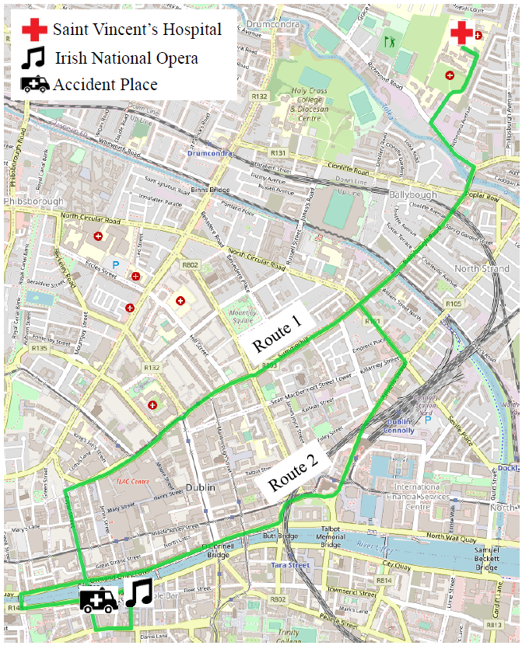
Service Placement Problem
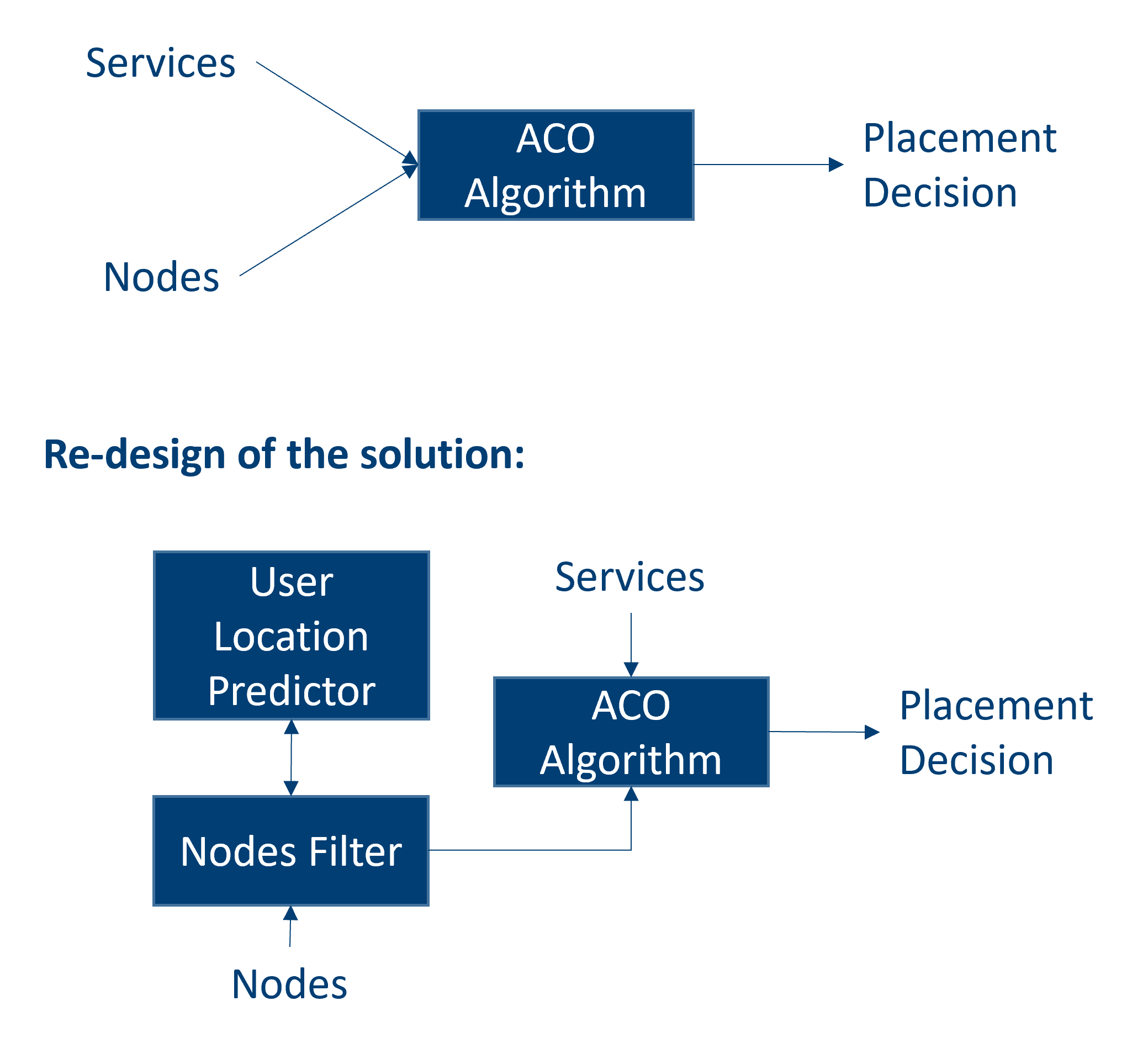

Service Placement Problem
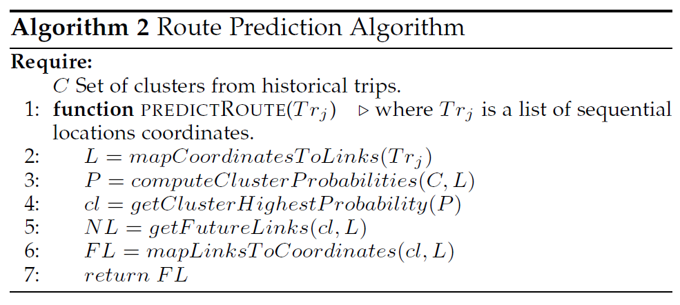
Service Placement Problem
Selecting edge servers close to current and future users' location. We used two approaches that cluster historical trips and use these clusters to predict the next link in the user's path:
- Bayesian Classifier
- Hidden Markov Model

Service Placement Problem

Service Placement Problem
Bayesian Classifier
Hidden Markov Model
Service Placement Problem
Bayesian Classifier
- Transition matrix depends on the number of streets in a city.
Hidden Markov Model
- Frequency matrix depends on the number of streets in a city.
Service Placement Problem
Bayesian Classifier
- Transition matrix depends on the number of streets in a city.
- A lot of data (i.e., trips) are needed to train the model.
- Training time is now an issue!
- We assumed a limited number of streets in our work.
Hidden Markov Model
- Frequency matrix depends on the number of streets in a city.
- A lot of data (i.e., trips) are needed to train the model.
- Training time is now an issue!
- We assumed a limited number of streets in our work.
Service Placement Problem
Bayesian Classifier
- Transition matrix depends on the number of streets in a city.
- A lot of data (i.e., trips) are needed to train the model.
- Training time is now an issue!
- We assumed a limited number of streets in our work.
Hidden Markov Model
- Frequency matrix depends on the number of streets in a city.
- A lot of data (i.e., trips) are needed to train the model.
- Training time is now an issue!
- We assumed a limited number of streets in our work.
Again, new design decisions are needed to deploy these algorithms in the real-world.
Conclusions
Conclusions
Conclusions

Conclusions

Conclusions
Overview
- ML Context
- ML Today
- ML Perception
- ML Objective Definition
- Context Matters
- DSA Example
- Sercice Placement Example
Conclusions
Overview
- ML Context
- ML Today
- ML Perception
- ML Objective Definition
- Context Matters
- DSA Example
- Sercice Placement Example
Next Time
- ML Adoption Process
- Problem First
- The Data Science Process
- Data Orientation
- Data Quality
- A Machine Learning Pipeline